OPINIONS
What does the future have in store? ese horoscopes reveal the painful truth about your zodiac sign.
A8
MAGAZINE
BC alum launches Ghana-based chocolate company that celebrates her Ghanaian roots. A6


What does the future have in store? ese horoscopes reveal the painful truth about your zodiac sign.
A8
BC alum launches Ghana-based chocolate company that celebrates her Ghanaian roots. A6

There was only so much damage control Boston College football could do after a nightmare first quarter in which the Eagles registered zero points, zero first downs, and just five total yards.
It didn’t get much better from there.
While both teams entered Saturday’s matchup coming off tough week one losses, BC (0–2, 0–1 Atlantic Coast) failed to put the pieces together in week two and fell 27–10 to Virginia Tech (1–1, 1–0). With the loss, the Eagles start the season 0–2 for the first time since 2011.
“I don’t want to make this about offense and defense,” head coach Jeff Hafley said. “This isn’t ‘Oh, look at the offense. Oh, look at the defense.’
The defense had good stops, and I thought they fought all the way to the end.”
After three drives, quarterback Phil Jurkovec had recorded an interception and just five yards on 2-for-6 passing. Jurkovec finished
with 135 passing yards and an interception on 53.6 percent passing in the loss.
Even when he had a clean pocket, Jurkovec misread his deep shots, and the game looked more difficult than it had to be. Zay Flowers, who broke 2,000 career receiving yards in week one, had zero targets until 10 minutes into the second quarter.
BC’s offensive line struggles continued from week one. The Hokies’ defense combined for five sacks and 10 total tackles for loss in their trouncing of the Eagles’ inexperienced O-line, which was without left tackle Ozzy Trapilo and right guard Kevin Cline. Trapilo did not appear, and Cline exited before the second half after sustaining an injury.
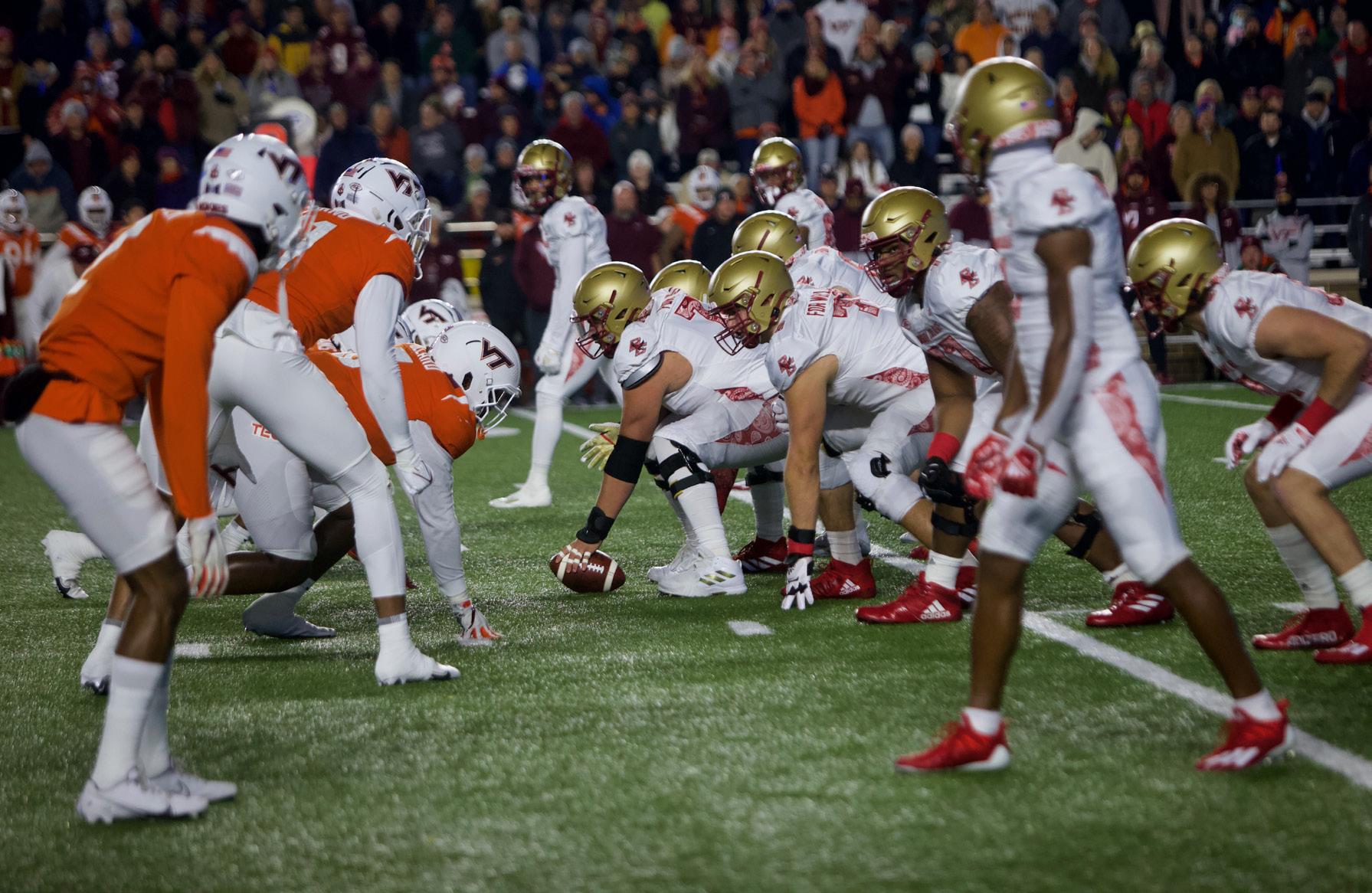
“The ball’s gotta come out, or we need to find a way to run the ball and not let Phil get hit like that,” Hafley said. “It can’t happen. I just think it was the time he had, I think guys were in his face. Every time he threw the ball there was a shoulder pad in his chest.”
BC’s failure to generate offense
started on the first drive. Following a Pat Garwo III rush that went for no gain, Jurkovec threw the ball into tight coverage on the second snap of the game. While Jurkovec intended for the ball to go to Jaden Williams
The exhibit explores the groundbreaking publications Raw and Weirdo, which cemented the legitimacy of the comic form.
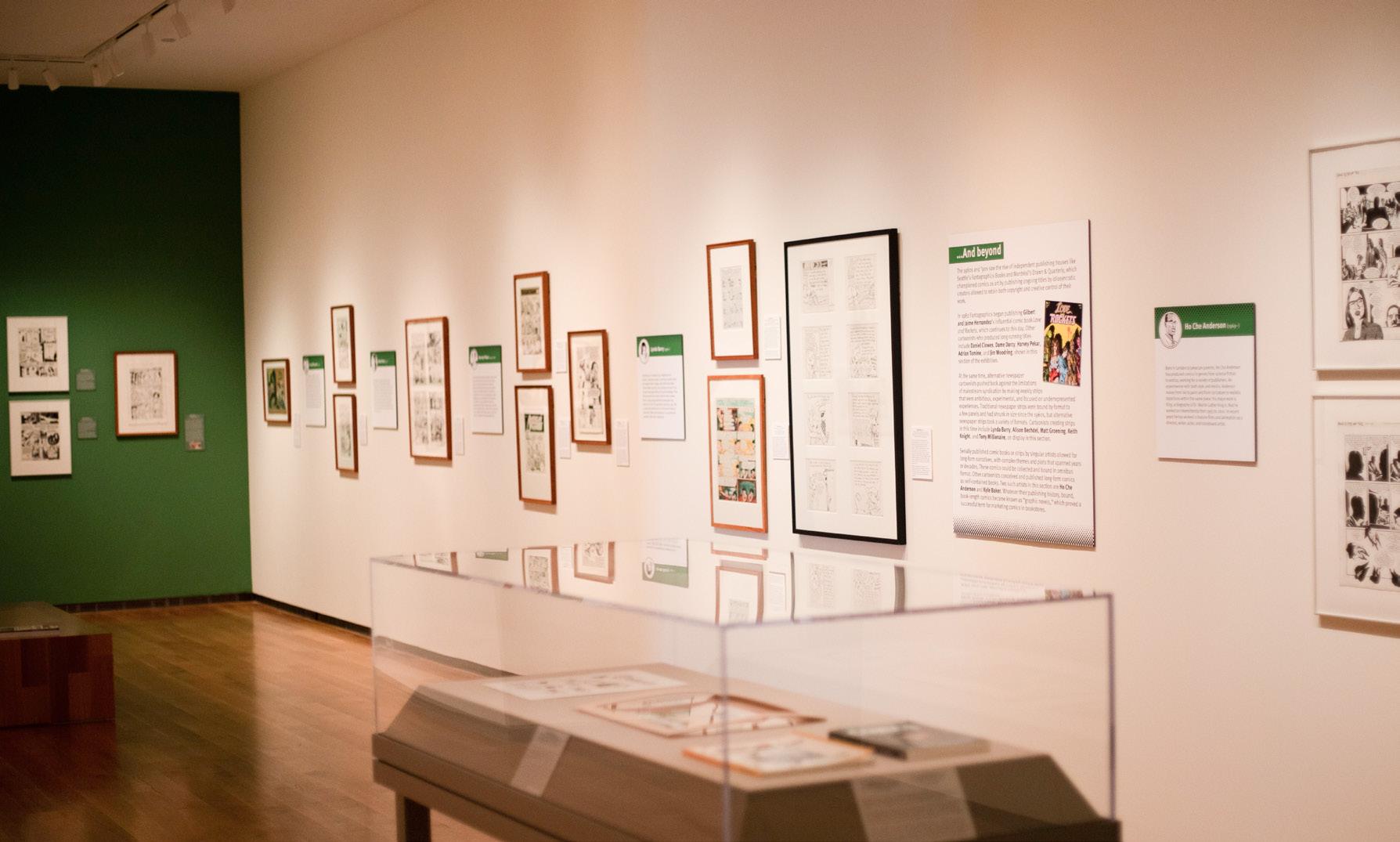
streaking down the right sideline, the ball filtered into the hands of Virginia Tech’s Armani Chatman for an interception.
Jurkovec said after the game that he saw Williams get jammed at the
A Starbucks in the Waban neighborhood of Newton joined 12 other locations across Massachusetts in ling to unionize with the National Labor Relations Board in May, according to labor nonpro t More Perfect Union. It’s the second location within a mile of Newton city limits to unionize within the last year.
e Starbucks in Cleveland Circle—a location favored by Boston College students—also unionized in May.
e e orts in Massachusetts follow a nationwide movement spurred by a combination of job insecurity and low wages, among other factors, that began in Bu alo, N.Y., in December.


Since then, Starbucks Workers United reported that more than 320 locations across 36 states have led petitions for elections, marking the first step in the unionization
process. Of those, 230 have voted to unionize as of Aug. 30.
Two additional locations in Massachusetts await elections.
“Forming a union will help us advocate for ourselves and bring a sense of democracy to our workplace,” the Waban Starbucks Workers United Organizing Committee wrote in a statement released in May after a unanimous vote at the location. “We hope to address issues of low wages, poor seniority pay, unpredictable hours, and understa ed shifts.”
e unionization process begins with an election when at least 30 percent of employees support a petition to unionize, according to the National Labor Relations Board. e board then seeks an election agreement between the union and employer, setting terms for the vote. Certi cation of a union occurs through a majority vote.
Join CAB this Friday from 2:00 to 5:00 p.m. at Baldwin’s Backyard to tie-dye BC t-shirts in preparation for Saturday’s football game.
B Y S OFIA L A B OY Asst. News Editor T HOMAS C ODER Heights Sta ffLed by ROTC students, band members, and cheerleaders, over 2,000 first-year Boston College students paraded down Linden Lane with several hoisting banners plastered with their dorm names for the first time in two years on Thursday.

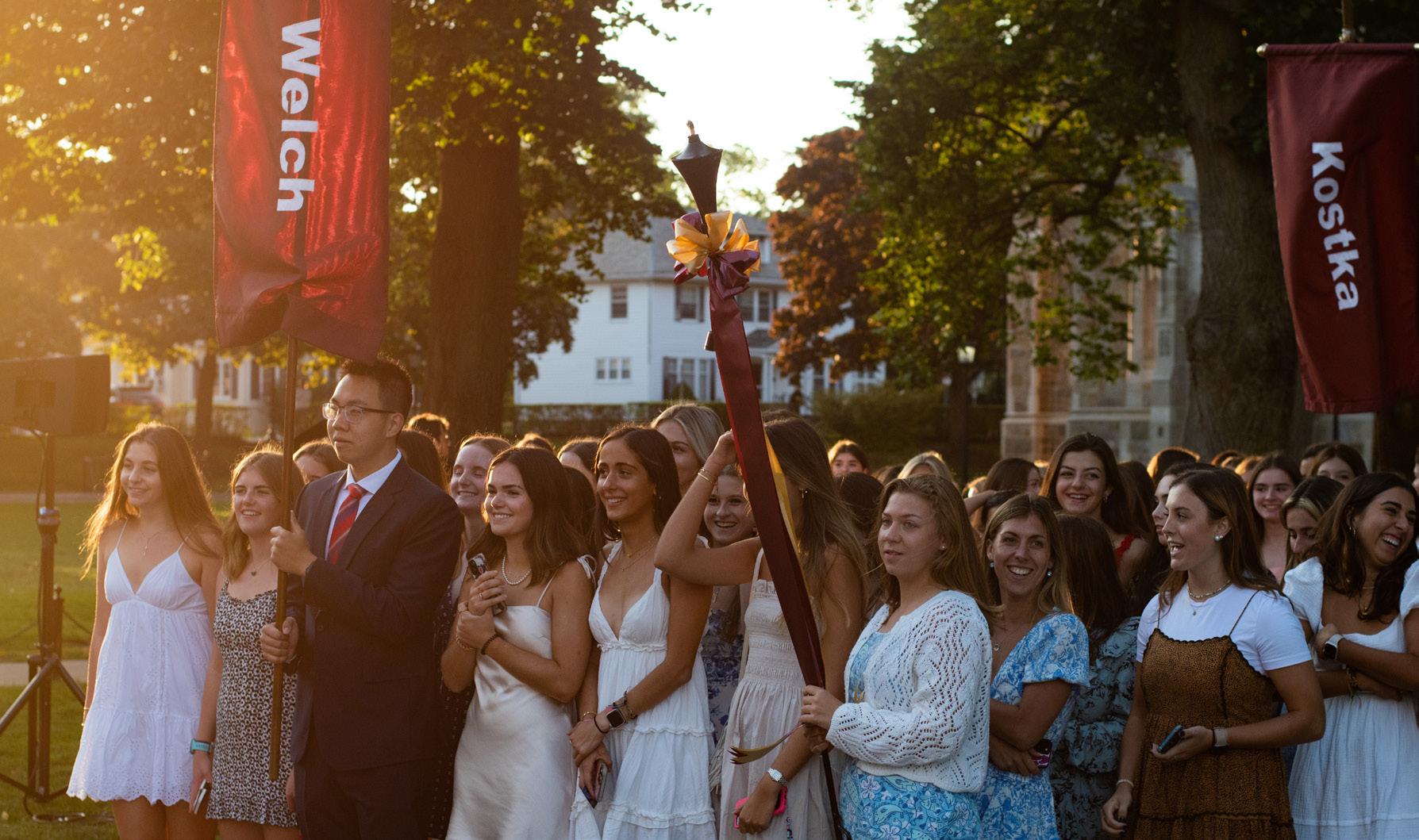
BC alum Liz Hauck, BC ’00 and M.Ed. ’09, then delivered this year’s convocation speech, sharing her stance on the benefits of community service and volunteer work with the Class of 2026.
“Volunteering is about intention and technique,” she said. “And it all begins with showing up. … So show up Class of 2026. Show up whenever, wherever, and for whoever you can.”
In an interview with The Heights , Hauck said that her involvement with community service programs such as Appalachia Volunteers, Shaw Leadership Program, Ignacio Volunteers, Emerging Leader Program, and 4Boston
taught her how to prioritize and incorporate volunteering into her life.
“Clubs like 4Boston teach you about commitment,” she said. “That kind of service becomes a part of your routine at Boston College. You make the choice to show up every week. One thing that’s great about the culture of service here is that it’s almost expected. It’s the norm that people do something.”
According to Hauck, BC professors’ commitment to their students—even after graduation— serves as an example of how they dedicate themselves to serving others.
When Hauck told her former professors she would be returning to BC for convocation, she said they responded very quickly.
“I emailed three of my former professors, one from my Perspectives class freshman year, one from a literature and social change class sophomore year, and my creative writing and honors thesis advisor,” she said. “I heard back from all of them within a couple of hours and it’s been 22 years since I had them
as professors. That really speaks to the kind of community and people’s commitment to one another here at BC.”
Hauck also highlighted the importance of continuously engaging in service opportunities. Volunteering is a skill, she said—one that must be practiced by repetition.
“I don’t think once is sufficient,” she said. “Sometimes it takes a while to push past the awkwardness and get into something more meaningful. As with any kind of exercise, you have to practice in order to see the benefit of it.”
Hauck said her memoir, Home Made, recounts her experiences and the lessons she learned after volunteering to lead a cooking class at a house for teenagers under state care.
From that experience, Hauck said she developed basic guidelines and rules about community service.
Zoom into this Shea Center Talk on Monday at 3 p.m. to hear from Lindsay LoBue, founder of Greenback Labs and an advisory director at Goldman Sachs, about her career journey.
Listen to a panel discussion featuring BC students and faculty on “What The Constitution Means to Us,” Monday at 4 p.m. in the Murray Conference Room.
“The four guiding principles of volunteering: show up when you say you are going to show up,” she said. “Notice the one small thing you’re supposed to do and do that thing. Be flexible, and prepared to improvise, because something will always go differently than expected. And then leave and come back again”
In the interview, Hauck said she hopes to inspire students to get involved with social justice while speaking to the freshman class.
“I hope they feel compelled to do some kind of service,” she said. “You have time for what you make time for and nobody’s too busy to help. We need to broaden how we talk about service. And if we’re committed to social justice, we need to think about what that looks like on a daily level.”
During her speech, Hauck told the assembled students that service and social justice efforts
are about giving any time you are able to provide on a week-to-week basis.
“What I do have to offer you is this,” Hauck said. “Not a rubric for how to live a life as a person for others, but an example of service as a way to our meaning, toward community, and through creed, and a reminder that social justice is a practice that requires whatever time you can give it this week.”
Hauck concluded this year’s academic convocation by emphatically encouraging students to volunteer and involve themselves in service throughout their time at BC.
“I want to make a case for getting involved in service opportunities during your weeks or years to come at Boston College,” she said. “Venture beyond your comfort zone to show up for your neighbor. For an hour, or a few hours, for a week, or over spring break.”
Themes of transitional justice and holding government accountable pervaded the Tuesday book launch of Redress, Ireland’s Institutions and Transitional Justice, a collection of essays chronicling the history of Ireland’s treatment toward women who su ered in Magdalene Laundries, woman and baby homes, and more.
“ ere’s a feeling that the state [of Ireland] wanted to bury this past, and yet the past came back in waves,” said Guy Beiner, the Sullivan Chair of Irish Studies at Boston College.
BC’s Irish Studies program and Center for Human Rights and International Justice sponsored the event, which involved a panel of the editors who helped compile the books’ several essays and testimonies from survivors and other sources.
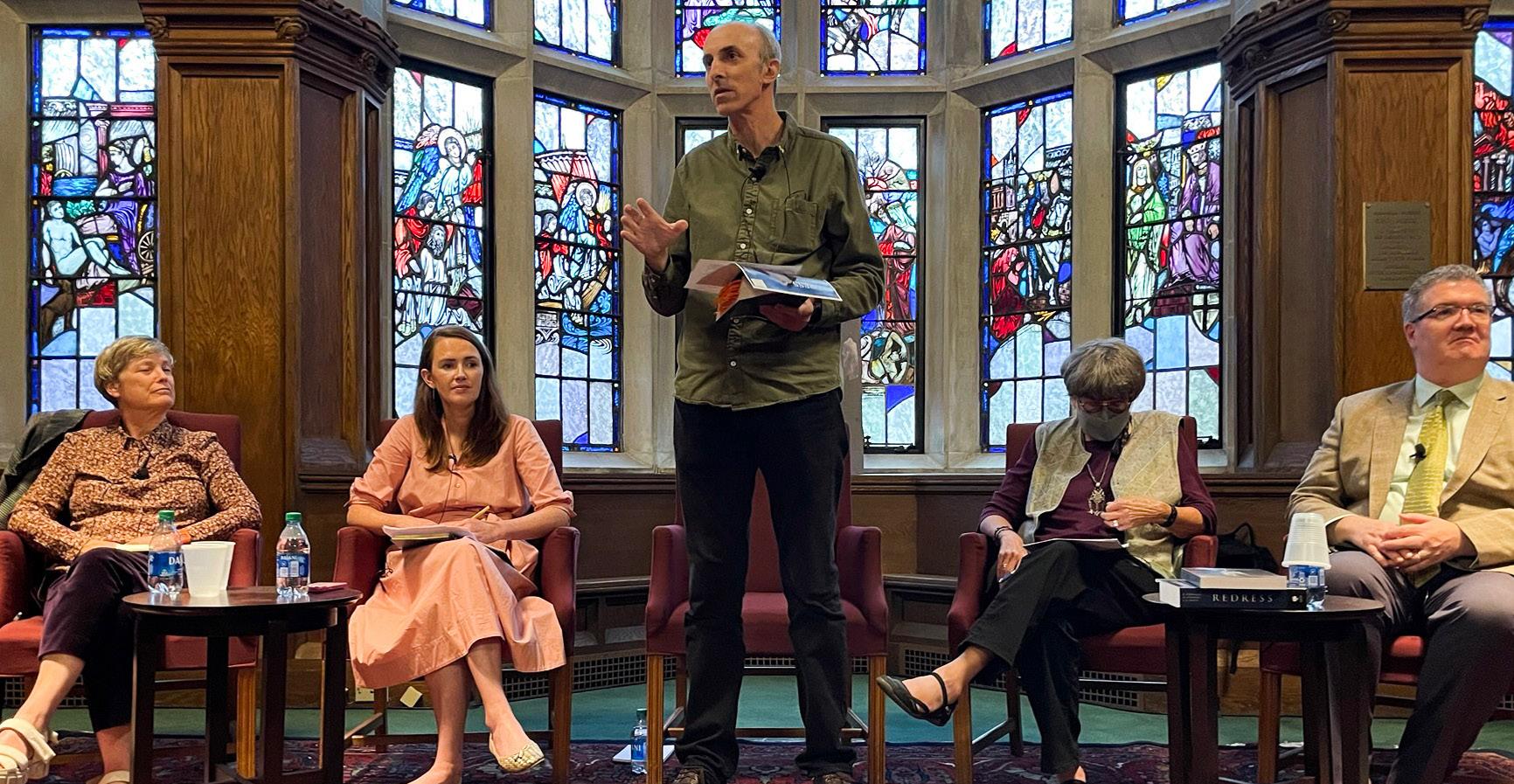
The book focuses on first-hand accounts, journalistic articles, legal scholarship, and other sources to reveal abuses in asylums, reformatory schools, and adoption services within Ireland during the 19th and 20th centuries—
particularly those aimed at women and children.
“We said let’s bring these principles of accountability, truth-telling, guarantees of non-recurring harm, and restorative justice and think about how these principles and values can guide an academic, intellectual investigation led by the survivors,” said Katherine O’Donnell, co-editor of Redress and an associate professor at the University College Dublin School of Philosophy.
James Smith, co-editor of the book and an associate professor of English and Irish Studies at BC, emphasized the signi cance of the term “redress,” which means to remedy or set something right. He also spoke about the critical role of the survivors in compiling this account of systematic abuse within Ireland’s highest institutions.
“Women are the foundation upon which we redress our institutions with transitional justice,” Smith said. “Survivor participation was central to this book and instrumental to discussion.”
e idea of “transitional justice” was a central theme of the book and the panel. It describes working toward receiving accountability from the Irish
government through educating the public on the abuses that occurred throughout the country. According to the editors of Redress, the book does this by including voices of survivors and other perspectives that were previously suppressed.
“Ultimately, we’re shown that transitional justice is not just about making amends,” Beiner said. “What it’s really about is something beyond that. It is also about empowerment for those who have become victims, and that it means that it goes beyond traditional scholarship. It’s driven by advocacy and it’s aimed at policymaking, so beyond what one might call ‘armchair academia.’”
is activist approach to evaluating parts of Ireland’s dark history, however, involves questioning the reality of the state’s core democratic principles that it claims to have, according to Maeve O’Rourke, co-editor of the book, an assistant professor at the National University of Ireland, Galway, and a barrister.
“One question that the book addresses is the concept of conditional justice and how it related to settled or established democracies, where it is
generally understood that the rule of law already functions and our constitutional and human rights are accessible,” O’Rourke said. “We suggest that Ireland is not a settled democracy and we question whether it is ever possible for a democracy to be fully settled.”
According to O’Donnell, the vision for this book came from a conference held at BC in November of 2018 that examined the institutional abuses that occurred in Ireland and how scholars, survivors, and others could move toward transitional justice.
“We dreamt of this conference because we wanted to set an agenda
for 21st century Irish Studies—not a medium ambition, but a large ambition,” O’Donnell said. “ e ambition was to think of Irish Studies as island-wide and diverse.”
Smith concluded the panel by encouraging this type of “activist” scholarship that contributes to understanding the injustices of the past.
“We are trying to signal the importance and model the best practice for how academics and researchers moving forward must necessarily engage with survivors and their life experiences and testimony constituting a form of knowledge in and of itself,” Smith said.
Football head coach Jeff Haey and former basketball head coach Jim Christian were the highest-paid employees at Boston College for the 2021 fiscal year (FY21), according to the annual 990 tax lings.
Ha ey earned $2,938,035 and Christian—who was red in February 2021 after six and a half years at BC—earned $1,428,053.
Following Ha ey and Christian, the next highest-paid University employees were John Zona, BC’s chief investment o cer and associate treasurer; Pat Kraft, director of athletics; Andrew Boynton, dean of the Carroll School of Management; Frank Cignetti, assistant football coach; and David Quigley, provost and dean of facilities.
Zona—who manages BC’s endowment—earned $809,661, according to the 990. After Zona, Kraft earned $747,988, Boynton
earned $743,582, Cignetti earned $740,821, and Quigley earned $658,665.
BC’s net assets increased by $1,109,987,431 in FY21, reaching a total of $6,311,936,438 by the end of the year.
Also by the end of the fiscal year, BC’s endowment skyrocketed from roughly $2.6 billion to $3.8 billion.
According to the 990, BC paid the Jesuit community on campus $4,991,083 for “instructional, administrative and institutional services, which include the services rendered by the University’s Jesuit o cers.”

The compensation for major Jesuit administrative gures, including University President Rev. William P. Leahy, S.J., is included in that amount.
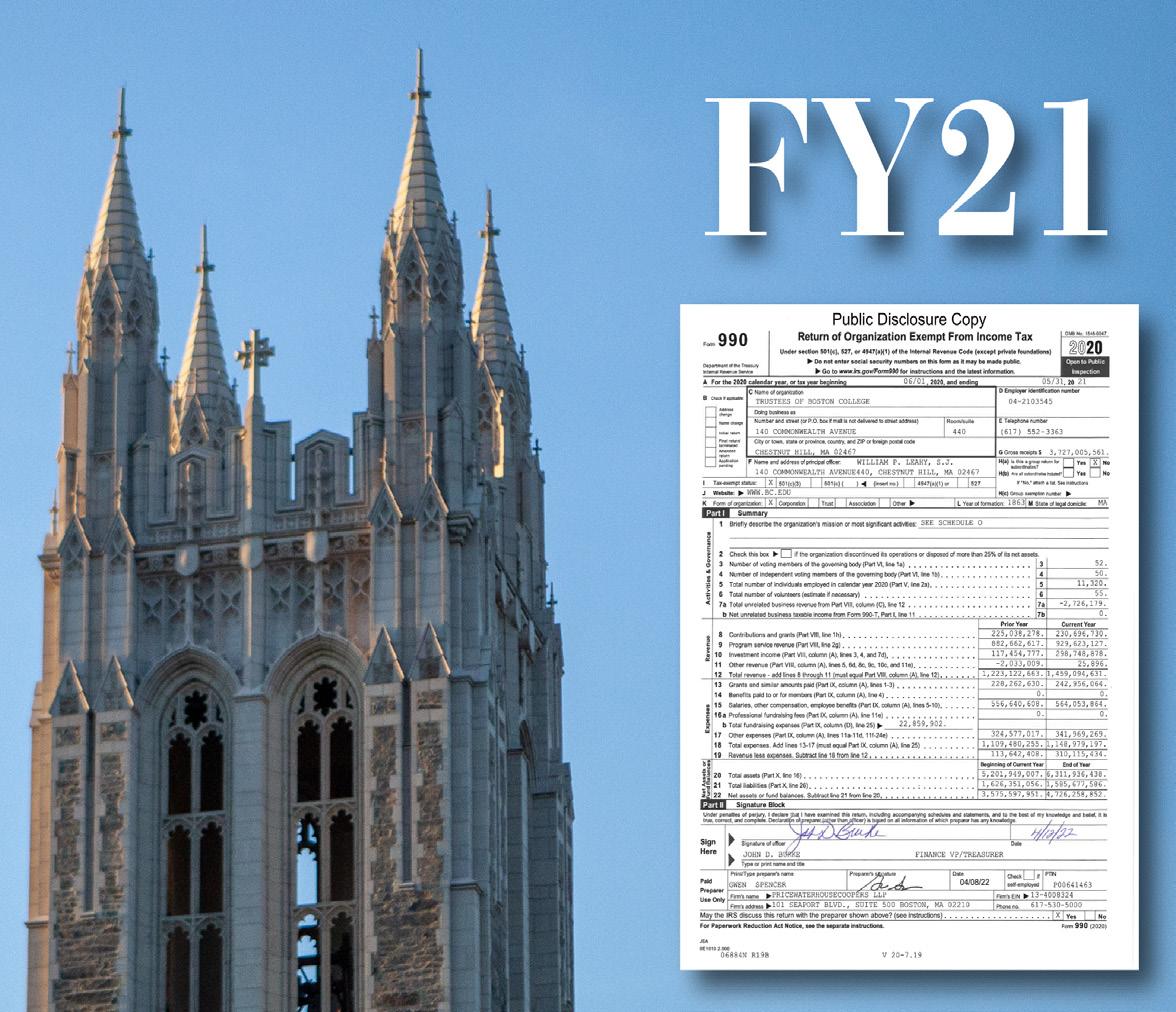
According to publicly disclosed lobbying reports, BC paid $230,000 to Cassidy & Associates—a lobbying agency—in 2021.
e University paid the agen -
cy to “assist management in the identi cation, development, and presentation of institutional initiatives for consideration by committees of Congress, federal regulatory agencies, and others.”
Specific lobbying issues listed in the reports included FY 2022 Labor HHS and Education Funding related to programmatic funding at the Department of Education and legislative policy related to the use of Name, Image, and Likeness for college athletes.
BC collected $735,575,111 in tuition and fees in FY21 and dispersed $242,437,470 in nancial aid to 8,946 students.
The University also gained $2,466,078,769 from its equities, $258,862,269 from real estate, $96,567,112 from fixed income, and $509,172,152 in cash in FY21, according to the 990.
During FY21, the University received $230,696,730 in donations. Over the past five years, the University has received a
total of $918,798,603 in grants, gifts, and contributions. BC also received $322,503 worth of art and $188,460 in books and publications.
e University donated $75,000 to the Allston/Brighton-Bos -
ton College Community Fund, $25,000 to Boston Charitable Trust Fund, $15,000 to Franciscan Missionary Sisters for Africa, and $100,000 to the Jesuit Conference of Canada and the United States in FY21.
We all must understand the history of racial inequality in America to bring about racial equity, according to Je ery Robinson, founder and CEO of e Who We Are Project.
“We need to go back 150 years and understand everything that went into creating this problem,” Robinson said. “If you don’t understand what created the problem, by de nition, you will never solve it.”
Boston College students were greeted with multiple BC Dining changes as they returned for the 2022–23 academic year. One controversial adjustment, however, was the decision to relocate sushi from Lyons to CoRo Cafe.

“I know for me and for others, especially since the dining bucks are so limited … we want to use the dining bucks for like co ee and stu , we don’t want to use it for other things, especially if they’re going to be overpricing sushi,” said Kenneth Bui, CSON ’25.
With the move to CoRo Cafe, students can now only purchase sushi through Residential Dining Bucks instead of their regular dining dollars—students on BC’s dining meal plan are only given $175 Residential Dining Bucks each semester in comparison to the $2,825 regular dining dollars.
On Sept. 1, Bui used the username “Ratt Sushi” to start a
petition on Change.org titled “Move sushi back to the Ratt.” e petition currently has 169 signatures.
Bui said he largely started the petition as a joke in response to the inconvenience of the sushi’s new location—Bui currently lives on Lower Campus. When Bui also realized that sushi is now only purchasable using Residential Dining Dollars, he said he became even more a ected by the issue.
“I didn’t know [the sushi] would go from meal plan to dining bucks, so that was like even more of an inconvenience because I’m a little stingy when it comes to my meal plan money,” Bui said.
BC Dining implements new changes to its program every year, according to Director of BC Dining Beth Emery.
“We have received some feedback that students prefer sushi at Lyons,” Emery said in an email to e Heights.
Emery did not specify how or if BC Dining will react to this feedback.
Suiyenah Chen—who signed
Bui’s petition—said that she used to get sushi everyday from the Rat, but now, since it has been moved up to CoRo Cafe, she has not gotten it once.
“I think it’s really inconvenient how they moved the sushi over to Mac because the Rat was in the middle of all the classes, so it was very convenient to just leave your class, go to Rat, and get food,” Chen, LSEHD ’25, said.
Beyond the controversial change to BC’s sushi, however, BC Dining also improved its menu variety and expanded hours and days for late night at Lyons and BC After Dark. Additionally, dinner at Hillside, combo meals/daily deals, and the FRESH stand at the farmer’s market have returned.
“We hope that students appreciate the increased variety with our ve-week menu cycle,” Emery said.
Emery also added that
Robinson spoke to members of the Boston College Law School after a screening of his documentary on ursday.
His documentary, Who We Are: A Chronicle of Racism in America, connects historical and present-day footage exploring the legacy of white supremacy.
Aside from creating the documentary, Robinson worked as a defense attorney for 34 years before becoming the deputy legal director and director of the Trone Center for Justice & Equality at the American Civil Liberties Union.
He later founded e Who We Are Project to address the underlying effects racism has on the judicial process.
“We could let virtually everyone out of prison tomorrow,” Robinson said. “But if we do nothing about racism in this country, we will fill those prisons back up with the exact same people in a very short period of time.”
According to Robinson, there are patterns of surges toward social reform and equality in history, but such surges always fade shortly before reaching the “tipping point” of enacting permanent social justice. He said e orts should be made by the current generation of Americans toward enacting racial justice permanently.
“I think of those women that walked in Birmingham during the Bus Boycott,” Robinson said. “And that was part of the movement that allowed me to go to a school that got me a good education. … We have a responsibility to the people that came before us and the people that are coming after us, and it’s something we can accomplish.”
Voting is key in this responsibility, according to Robinson, due to its massive effect on social justice throughout history. For example, Robinson mentioned the 1876 presidential election, asserting the close election led to a century of separate-but-equal and legal racism in the United States.
Robinson also explained the importance of e ectively educating children about the racial justice issues prevalent in the United States today and that a comprehensive school curriculum is essential for fostering a culture that strives to achieve social justice.
“In 1837, John C. Calhoun, one of the most belligerent racists in American history, wrote this paper,” Robinson said. “He said, ‘We have got to stop letting teachers teach about abolition in schools, because if these kids get abolition in their heads, slavery is done for and this country is going to face a war that’s going to drench us in blood.’ And he was absolutely right.”
Robinson ended his talk with a word of advice for the students in attendance, encouraging them to get involved with social justice organizations and make a di erence.
“ ink about where you’re going to spend your career as a lawyer, think about the candidates who run for things, not just president and senator, but district attorney, and school board member,” Robinson said. “ ese are the kinds of things that are going to make a di erence.”
Starbucks, from A1
With the surge of unionization efforts across the country, the National Labor Relations Board has issued 26 complaints against Starbucks and found merit in 97 charges of violations of labor law and attempts at union busting, according to Starbucks Workers United.

Kayla Cook, a barista and union organizer in Allston, said being prounion can come with consequences.
“Workers who are pro-union are being driven to quit,” she said. “They face dramatic cuts in hours, an uptick in random write-ups, and receive increased pressure from management. We’re overworked and people are either not able to see their coworkers to unionize or they’re just too tired at the end of their shift to really work on it.”
In a statement provided to The Heights , a Starbucks spokesperson wrote that claims of union busting are false.
“From the beginning, we have been clear that we will respect the process laid out by the NLRB and bargain in good faith with the stores
that vote for union representation,” the spokesperson wrote.
Thomas Kohler, a BC Law professor and labor and employment law scholar, said he is “not surprised” by the efforts of Starbucks employees, as it mirrors the wave of unionization occurring across many industries.
“What’s driving this is all sorts of things, [including] job insecurity and precarious employment,” said Kohler. “Employment is—for the most part—at will, so a person can be fired at any time, and they are never certain what their hours nor do they have control over that.”
Kohler said he thinks that the pandemic made it clear that shortterm jobs—including those at Starbucks stores—make it difficult for workers to plan for the future.
The labor force has shown an unwillingness to work for low wages, he said, spurring unionization efforts such as those at many Starbucks locations.
Collective bargaining through unions helps regulate the employment relationship, Kohler said.
Tyler Davids, a Starbucks barista
in Brookline, said he hopes unionizing can help lead to more predictable wages for the company’s employees.
“We need to guarantee that if we’re full time, we get those hours and are going to earn enough of a living wage to actually work one job and pay rent,” Davids said.
At the Cleveland Circle Starbucks location, the union helped protect workers. Due to a remodel that caused a three-month closure of the store, Starbucks had to negotiate with the store’s employees, who feared the time off would pose a significant threat to their primary source of income, according to Starbucks Workers United.
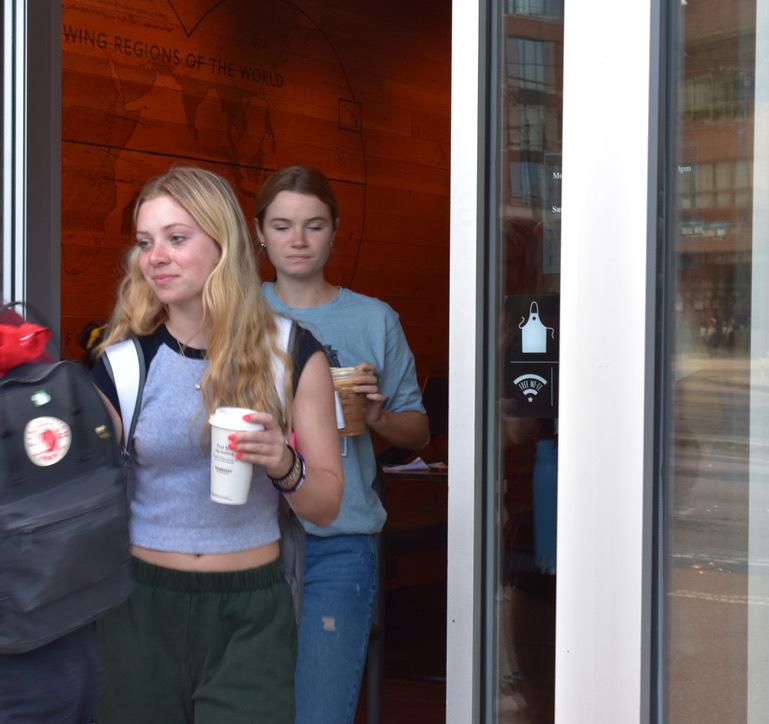
As a result of negotiation, the location’s employees received guaranteed wages through the project, their top choice for temporary store reassignment, “substantially equivalent” hours with compensation for any difference, and periodic updates on the progress of construction, according to Starbucks Workers United.Unionization efforts today closely resemble labor movements of the early 1900s, though today’s demographic of unionizers is younger, more diverse, and targeting broader causes than just the laborers’ economic conditions, according to Kohler.
The increased efforts allow workers like Davids to not only turn to online barista groups to gather ideas in their efforts, but also receive support from the public and local officials. Despite the slow and bureaucratic nature of unionizing, Kohler said he believes that unionizing efforts are going to remain workers’ strongest and most effective tool for ensuring the quality of their work environment.
“We don’t live as lone ants—we live in communities,” he said. “And community within communities is incredibly important. Collective bargaining doesn’t take care of everything, but it does play an incredibly important role.”
Newton residents cast 14,146 ballots in Tuesday’s statewide primary election—the most primary votes since 2006—according to the City of Newton’s website.
“We’ve learned to take our vote less for granted over the past few years,” Melyssa Plunkett-Gomez, a resident of Newton Centre, said in an interview outside the Church of the Redeemer, a Newton polling station in Ward 8. e primary elections, held every four years, determine nominees for a slew of o ces, from governor to governor’s council members.
e vast majority of candidates ran either unopposed or in uncompetitive races.
Two of the 19 races on the ballot came within 10 percentage points: lieutenant governor on the Republican side, and the race for the governor’s council seat for district 3 on the Democratic side. e Democratic nominees for the three highest statewide o ces—governor, lieutenant governor, and attorney general—are all women.
Though most of the primary elections were uncompetitive, one voter opted to cast her vote in support of the women running for o ce.
“I’m very thrilled that several women are running [for office],” Lois Eichler, a Newton resident said. “ e idea that there’s going to be a woman governor of Massachusetts is very thrilling to me and is a very important reason why I’m out here tonight.”
Maura Healey, Kim Driscoll,
and Andrea Campbell each won their elections by over 10 percentage points in the statewide tally, according to NBC Boston.
The other statewide Democratic nominees for secretary of state, auditor, and treasurer are William Galvin, Diana DiZoglio, and Deborah Goldberg, respectively.
Geoff Diehl won the Republican nomination for governor, Leah Cole Allen for lieutenant governor, James McMahon for attorney general, Rayla Campbell for secretary of state, and Anthony Amore for auditor.
Looking ahead to January, when new members of the commonwealth’s executive branch will take o ce, Newton voters shared what issues they would like the new o cials to focus on.
Plunkett-Gomez said that infrastructure and public transportation were two of her priorities when she cast her vote.
Another topic of concern is the allocation of government funding across the Boston area, according to Andres Gomez-Rivas, a Newton voter.
“When you hear about all the additional funds that are around, Beacon Hill and [the government] just hasn’t been able to appropriate it properly with all the infrastructure needs,” he said. Eichler voiced similar concerns.
“Massachusetts has a big budget surplus, which I think the legislature was trying to gure out how to give [the surplus] back to the people, and they couldn’t get their act together,” she said.

e general election is on Nov. 8. e deadline to register to vote is Oct. 29. More information is available on the City of Newton’s election site.
Fentanyl contamination and the introduction of new drugs might account for recent increases in opioid overdose incidents both in Newton and statewide, said John Carmichael, Newton chief of police, at a quarterly discussion with the Public Safety & Transportation Committee of the Newton City Council on ursday.
From January to August, the Newton Police Department (NPD) recorded 20 incidents of overdose and four fatalities. ose numbers are lower than the 39 overdoses and ve fatalities reported in 2019, though they are equivalent to the totals for the full year of 2021.
“When we started to see an increase in overdoses here in Massachusetts, a lot of things were put into place to try and immediately deal with that, ‘’ Carmichael said. “We’re not there yet. We’re continuing to see this epidemic a ect individuals and families across the state, including here in Newton.”
Carmichael said that the spread of xylazine, an animal tranquilizer, has complicated the opioid crisis across Massachusetts. e drug is frequently
mixed with opioids to augment their effects. Naloxone, used to reverse the e ects of an opioid overdose, does not work when xylazine is involved, as it is not an opioid, Carmichael said.
Another complicating factor, Carmichael said, was fentanyl crosscontamination.
Traces of fentanyl have been discovered in cocaine, methamphetamine, and some counterfeit Adderall pills.
“In Massachusetts [and] in other states, we have seen overdoses where an unwitting person [who] used cocaine, for example, has an overdose from fentanyl because of the small amounts of that drug … [are] so powerful’’ Carmichael said. “And unbeknownst to that user, they end up [overdosing].”
e opioid crisis in Newton is largely con ned to adults, not teenagers, which doesn’t follow national patterns.
Overdose caused the death of 492 adolescents in 2019, according to a medical journal published on the JAMA network. In 2021, this number rose to 1,146.
GRAPHIC BY ANNIE CORRIGAN / HEIGHTS EDITORthe greens,” he said. “During drought conditions, we already know what to do. However, the state or city might contact us, even if it’s our own well water, asking us to cut back 30 or 40 percent.”
Miller says the Newton Commonwealth Golf Course uses a process he calls “light dusting” in order to keep the course healthy but not oversaturated during a drought.
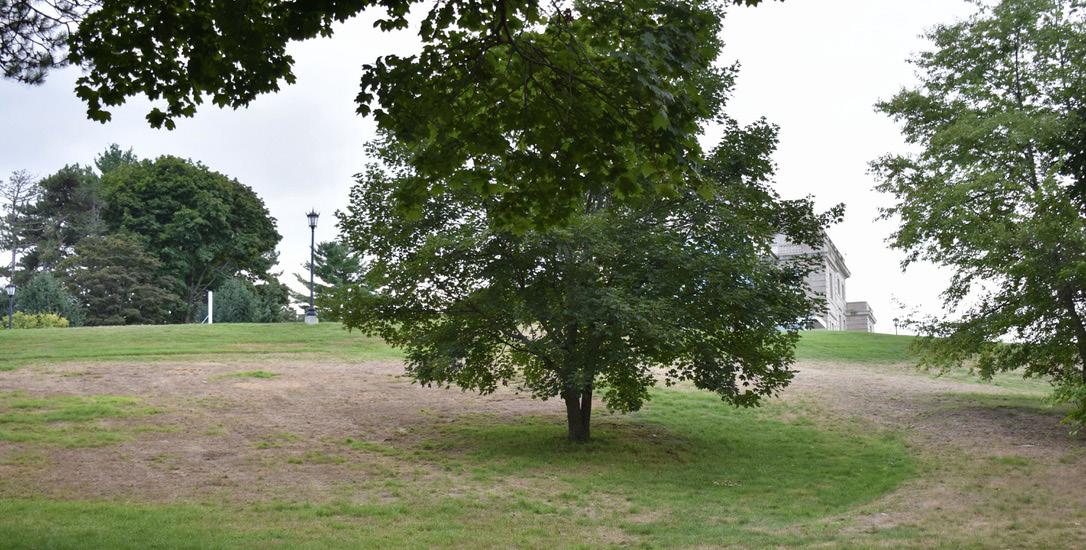
“We will lightly spray the fairways, but not using anywhere near the water we would normally use,” he said. “Our rst priority is keeping the tee box nice and green.”
Miller also said other aspects of the golf course’s business are thriving in the heat.
planted lettuce it just burned up because we couldn’t water enough.”
e U.S. Department of Agriculture has designated Middlesex County a primary natural disaster area as a result of the drought. Last July, on the other hand, was the wettest month in the state’s history, according to MassLive.
“ is is climate change,” Maslowe said. “It’s gonna be less predictable and more extreme for long periods of time.”
Climate change, Maslowe said, will challenge the entire farming industry. Changes in CO2 levels, temperature, and the frequency of extreme weather can all have a signi cant impact on crop yield, according to research compiled by the City of Chicago.
BY CAITLIN CLARY Heights StaffAs Greg Maslowe surveys the Newton Community Farm, he sees dry soil, burnt-up lettuce, and wilting trees. An extreme drought and hot temperatures have endangered the plants’ health, according to Maslowe, the farm’s manager.
“We have to move irrigation every hour and a half, all day long, three days a week,” he said. “ at is de nitely costing us time, which is money.”
Whether it be at farms or golf courses, the summer drought has left Newton businesses with changes in revenue.
For some, it’s increased sales. For others, like Maslowe, it spells danger for businesses.
Some are wondering if it is the result of climate change.
Both Middlesex County and Suffolk County, where Boston College’s Newton and Chestnut Hill campuses are located, are categorized as being in
a state of extreme drought according to the University of Nebraska-Lincoln’s drought monitor. About 25 percent of Massachusetts is under the designation of extreme drought.
Rainfall levels in the City of Newton are roughly 9 inches lower than what is expected in a normal year, according to Mayor Ruthanne Fuller’s Aug. 18 newsletter update.
Newton has experienced record-high temperatures this summer, exceeding the historical average range of 63–81 degrees Fahrenheit, with some days reaching into the 90s.
Several months of low rainfall have created conditions su cient to classify an extreme drought in Newton and other cities, according to Massachusetts’ Drought Management Task Force.
Across the city, Newton is feeling the environmental impacts of the drought.
“All of us can easily see that ponds, streams and rivers are low, lawns and gardens are turning brown, the ground
is dusty and we know farmers’ yields are down,” Fuller wrote. “Drought is also stressing our trees, making them more vulnerable to being uprooted or damaged during storms.”
Newton’s businesses are feeling the heat as well. AJ Juarez, owner of Juarez Landscaping and Tree Services, said the drought is a ecting his company’s work.
“People are not getting their lawns cut because of the weather,” he said. at is something we didn’t expect.”
Other businesses have seen an uptick in both revenue and clientele during the hot months.
Sterling Golf Management, the company that manages the Newton Commonwealth Golf Course, is one of them. According to Jay Miller, the company’s director of golf operations, the Newton Commonwealth Golf Course has seen a 17 percent increase in gross revenue.
“Most of our courses will have our own wells where we pump the water into a big irrigation pond to irrigate
“Since the start of this heatwave and drought conditions, from about 10:30 a.m. onwards, my golf cart revenue goes up,” he said. “People don’t want to push a cart or carry their bags because it’s so hot. Our soft drink, Gatorade, and even beer sales are way up this year.”
Miller credits his clientele’s understanding and acceptance of weather conditions in keeping business thriving.
“Ninety-eight percent of golfers understand [the condition] of the drought,” he said. “We haven’t had hardly any complaints this year.”
Newton’s drought has reminded many residents and businesses of ecological problems associated with climate change.
Maslowe, the community farm’s manager since 2006, said the drought is creating more work for his sta , and it’s endangering the farm’s crops.
“Even our trees are wilting on really hot days,” he said. “We’re not harvesting tomatoes in quantities that we would in a non-drought year, and, more importantly, every single time we have planted carrots they failed to germinate because the soil was so dry, and every time we
“This is absolutely a new reality,” Maslowe said. “Farmers are working in concert with natural systems, and we’ve messed those systems up.”
Fuller is urging residents to conserve water at home by xing dripping faucets and showerheads, testing for hidden leaks in water systems, replacing the apper or ush valves in trickling toilets, and choosing water-e cient appliances.
Fuller also recommended decreasing outdoor residential water consumption by watering lawns and plants in the morning before there is a higher evaporation rate, checking soil for dryness before watering it, raising the blade level on mowers, and using garden hoses with a shut-o nozzle.
Despite the drought conditions, Fuller assured residents that the residential water supply in Newton is abundant.
“Newton and the other 46 communities whose water and sewer are provided by the Massachusetts Water Resources Authority … have an ample water supply,” Fuller wrote. “The Quabbin/Wachusett system is so large it is able to withstand short and medium-length droughts.”
from di erent parts of the world.”
Salt Patisserie serves classic bakery items such as eclairs, tarts, cookies, and mu ns, as well as croissants, sandwiches, and macarons.
For customers who enjoy sipping on a co ee or specialty drink with their meal, the bakery’s co ee bar provides a wide range of options from mochas and americanos to draft lattes and cold brew.
Although Salt Patisserie mainly serves baked goods, Silva said he hopes to expand to serve a full lunch menu, including a variety of sandwiches, salads, and soups.
Crunchy, peppery arugula and thinly chopped red onions elevate the dish by adding a layer of freshness that isn’t too overpowering.
The lox croissant sandwich at Salt Patisserie is made with attention to detail that sets it apart from other similar dishes at area breakfast spots.
Colorful bonbons, macarons, and eclairs nestled in the glass display cases look almost too beautiful to eat.
of citrus prove that Silva is a master of balancing delicate avors.
Silva said he hopes to open additional restaurants and bring more of his avors to the Newton community that he has fallen in love with.
BY MC CLAVERIE Assoc. Magazine Editoriago Silva remembers witnessing the chaos in the kitchen of his stepdad’s restaurant as a child. e res and yelling of the cooks did not scare him, but instead fostered his dream of working in the food industry.
ough Silva has worked at a variety of restaurants in New York City and Newton, and even won Food Network’s culinary competition show Chopped in 2015, Silva’s childhood dream came into full fruition when his Newton Centre bakery, Salt Patisserie, hosted its soft opening on July 9.
Though some customers may be intrigued, or potentially a little confused, by Silva’s decision to incorporate the word “salt” into the name of his bakery,
Silva said that for him, salt represents the perfect combination of avors.
“My art is a connection to sweet and savory,” he said. “Salt is the one ingredient in every single recipe. It’s on everything. … So it’s one of these things that it’s a simple ingredient, it’s common, everyone knows, [and] it’s on everything.”
With its burnt orange awning and sleek interior, Salt Patisserie stands out among the plethora of bakeries and co ee shops in Newton Centre. Salt Patisserie combines classic French and Italian techniques with Brazilian avors, creating a unique fusion of food traditions.

“I’m Brazilian—100 percent love the food, the culture of Brazil, but I also love mixing flavors from Brazil with techniques from France and Italy and doing all those things,” Silva said. “And there’s things from Brazil, but there’s also things
For lox lovers, Salt Patisserie’s homemade lox croissant is the perfect savory brunch or lunch staple.

e crispy-on-the-outside, soft-onthe-inside croissant topped with a salty, umami seasoning contrasts the tender lox and herby cream cheese spread, creating an explosion of textures and each bite.
Topped with small akes of edible gold, the Ferrero Rocher eclair is a twist on the classic chocolate eclair that serves perfectly for Nutella lovers. A flakey pastry shell envelopes smooth, decadent, chocolate-hazelnut cream that oozes out with each bite.
Chopped hazelnut chunks add an
“I live here, I’m the owner of the shop, I’m here during the morning, and I’m here to talk to clients,” he said. “We’re making everything in house. We’re not bringing anything. Everything’s made daily, fresh, [with the] best ingredients available that I can source.”
Salt Patisserie is located at 792 Beacon St. in Newton Centre. It is open Monday through Friday from 7 a.m. to 7 p.m., and Saturday and Sunday from 8 a.m. to 7 p.m.
MOLLY BRUNS / HEIGHTS STAFF Several months of low rainfall have created conditions sufficient to classify an extreme drought in Newton and surrounding cities.Unhappy with her nine-to- ve and searching for a new job, Kimberly Addison stumbled upon a career-changing idea while sitting in a Swiss chocolate factory in 2014. It was there that she learned that the cocoa in Swiss chocolate is sourced from Ghana, her native country.

Now, Addison is the co-owner of ’57 Chocolate, a Ghana-based chocolate company, which she runs alongside her sister, Priscilla.
e company’s name, which comes from the year of Ghana’s independence, aims to capture the spirit of Ghana’s Independence Day by manufacturing chocolate in small batches with resources from the country itself, according to its website.
“Having lived in Switzerland for years, I was constantly gifting chocolate to people wherever I traveled,” Addison, BC ’12, said. “So, if I was coming back to BC, I would bring people Swiss chocolate. If I was going to Ghana, I would bring Swiss chocolate, and then I realized that that was an issue. If the raw material is coming from Ghana, then I should be bringing Ghanaian chocolate to friends in Switzerland and my friends in the States.”
Addison and her family had already planned on moving back to Ghana, but the concept of ’57 Chocolate ensured she would have a potential livelihood.
With all of her plans falling into place, there was only one obstacle in her way: she did not know anything about making chocolate. Having lived in Switzerland for years, chocolate was a part of her daily routine, but she never thought about where it came from.
“ e rst thing we did was google how to make chocolate, like a chocolate-making course,” Addison said. “Because you know, we had done a lot of
eating of chocolate, but it’s such a part of the everyday life [in Switzerland] that you don’t even really think [about where it comes from.]”
Addison and her sister found a chocolate-making course in the UK, and just two weeks after their move to Ghana, they repacked their suitcases and headed back to Europe.
“We went to the UK to take this howto-work-with-chocolate class, which was very helpful to us, and it was a great intro,” Addison said.
After learning the basics in the UK, they returned to Ghana to source the cocoa for their chocolate.
“I remember just emailing a whole bunch of chocolate makers, and I was essentially asking them for an apprenticeship,” Addison said. “I got a lot of ‘No’s.’ I must have written over 50 emails, and out of those emails, I only got one positive response, but that was all I needed.”
Addison’s one ‘Yes’ was from Doble and Bignall, a UK-based company started by Simon Doble and Margie Bignall.
e couple was thrilled with Addison’s idea and welcomed her into their chocolate-making world free of charge, so she packed her bags and once again headed back to the UK.
“I stayed with them for a month, and I basically was their apprentice,” Addison said. “ ey really taught me a lot. at was the key moment where I really learned the bean-to-bar process. ey helped us tremendously in sharing and passing on their knowledge.”
In January of 2016, after years of courses, apprenticeships, sourcing, and learning about how to produce chocolate, Addison and her sister produced their rst batch of chocolate under the label, ’57 Chocolate.
“It was nice to be like ‘Okay, this is possible,’” Addison said. “Because even in the midst of all the support we got from family, from friends, from strangers who didn’t know us but believed in
the idea, we also had a lot of people who were telling us that it wasn’t a good idea, and that it may not be possible. Can you really make chocolate on a small scale in small batches? So the fact that we did it was like, now we can prove to the naysayers that it actually is possible, because we’ve done it.”
ough manufacturing their rst bar was a signi cant accomplishment, Addison’s sister Priscilla said that it also came with its aws. Priscilla said they had not yet mastered all of the techniques necessary to produce the perfect bar of chocolate.
“When we started this business, we weren’t the best at it,” Priscilla said. “It’s de nitely been a work in progress. And now we’ve gotten to a point where we’re really great at what we do. But initially, you know, Kim and I, we laugh about how we kind of owe a lot of our rst customers, our dedicated customers, a couple of free bars of chocolate because the tempering wasn’t our best work.”
As a co-founder, Addison acts as a jack-of-all-trades, involving herself in every aspect of the ’57 Chocolate production.
“We’re constantly producing chocolate,” Addison said. “We’re roasting, we’re grinding the beans, we’re molding chocolate or packaging. So every day is a little bit di erent. Depending on the order, sometimes we’re doing chocolate tasting events.”
Unfortunately, three years into the ’57 Chocolate journey, the COVID-19 pandemic halted its progress. After experiencing one of their best years yet in 2019, Addison and her sister were forced to send their workers home—while still paying them. ey continued to sell chocolate but had to do all of the labor themselves.
“We had clients in the United States, surprisingly, who were still ordering, so I was in production, packing and shipping out every small order that was coming
in,” Addison said. “And I’m grateful for that. I honestly don’t know what was making people buy chocolate at that time. Maybe it’s comfort food or something like that, but I was very grateful for even the small orders.”
e pandemic also gave Addison and her sister the opportunity to develop new products to t people’s adapting needs, she said. With a rising trend in home baking, they developed a line of chocolate chips, which is still one of their most popular products. ey also created at-home chocolate testing kits, where Addison and her sister would guide them through a chocolate-tasting course remotely.
“It was de nitely hard, and I mean we’re still feeling, I think all businesses are still feeling the e ects of COVID,” Addison said. “But I mean, gradually we’re seeing things get better.”
She also took PULSE, a community service–based course at BC, which she said was a foundational experience.
As part of her PULSE course, Addison did service in Rockwell House, a home serving people with HIV and AIDS experiencing homelessness. Addison’s time at Rockwell House inspired a passion for social justice that she has brought with her to ’57 Chocolate, she said.
Addison also said she took a sign
language course at BC, which helped her incorporate her passion for social justice into her business. ough Addison was unaware of it at the time, the skills she developed in her sign language course have now helped her hire and onboard deaf employees. She currently employs a deaf man who has even further developed her sign-language skills and taught other workers how to sign.
“PULSE really enabled me to look at things from A to Z [and taught me] how to incorporate social justice into whatever I’m doing in life,” Addison said. “I don’t see ’57 Chocolate as just a business, I see it as a social enterprise because it’s helping people who may not have easy access to jobs. One of our employees is deaf, and we have another employee who is now learning to read and write because she didn’t get a chance to go to school earlier on.”
Priscilla said her sister’s leadership style is one that promotes innovation, progress, and enjoyment. e two built their company on the basis of learning something new and creating a quality product, she said.
“I think one thing that we both brought into this business is that you know, our background isn’t in chocolate,” Priscilla said. “If we can learn how to do it [and] our team can learn how to do it... anybody is teachable.”
BY STEVEN JAVIER DUMENG Heights Staffe backpack you wear can say a lot about your style, community, and culture. While most students rely on backpacks to store their textbooks, laptops, notebooks, or between-class snacks, we don’t often analyze the meaning behind them. A student’s choice of backpack might seem mundane, but it can also serve as an understanding of who they are and prove that we may or may not be

a part of a trend.
e North Face Fanatics
For many Boston College students, it is likely that a handful of their friends and peers own a North Face backpack. Whether you are a fan of them or not, there is arguably nothing more classic than “a North Face.”
What makes these bags so popular? Is it the loud whistle that comes on the straps? Is it the cool colors? Is it the endless compartments to hoard the random juices and chips you bought to liquidate
your meal plan before move-out day?
One student said that the durability and reliability of North Face backpacks make them worth the price.
While North Faces have been among America’s favorite backpacks since the 1960s, it looks like there’s a new sheri in town. To my surprise, I found out that Topo Designs is the top manufacturer of backpacks in the United States, according to Bagcottage.com.
Finding a BC athlete with a gray New Balance backpack on campus is easier than getting your rst option for on-campus housing. No one sports BC merchandise like our athletes, and their bags are the perfect example of that. Two years ago, many BC athletes wore their bright burgundy Under Armour backpacks that students could see from anywhere on campus like the North Star.
Last year, the new gray New Balance bags provided a smaller, slimmer, more simplistic design.
One student athlete said that he likes the design of the New Balance bags because they are decently sized and t well. ese backpacks are also incredibly exclusive. Both New Balance and the BC Bookstore do not sell this item on their
respective websites. So, if you want that bag—or to be a D1 athlete, I guess—hit the Plex and get to training.
Lululemon Lovers and Herschel
How could we talk about any trend without mentioning Lululemon? I mean the people who wear this brand are loyal to the core. If you see someone with a Lululemon bag, chances are that it matches their Lululemon water bottle, leggings, headband, sweater, jacket, t-shirt, and pants.
ere is even an o cial BC x Lululemon backpack sold at the bookstore which, to no surprise, is currently sold out. If that isn’t a trend, I don’t know what is.
Similar to Lululemon, Herschel is also a brand that many students seem to enjoy. Known for their retro and hipster-style designs, Herschel bags are perfect for those friends who swear they were “born in the wrong decade.” You can almost imagine a student rolling into class in their Dr. Martens, a beanie, and a Herschel backpack.
Where there is a tote bag, there is a group of trendy and fashionable college students. Of course, a tote bag isn’t near-
ly the most practical or comfortable option to lug around overpriced textbooks and a MacBook Air covered in random stickers, but it sure does look good with a stylish out t. Not to mention, they are inexpensive and are easy to store.
Two brands that I’ve personally noticed an increase in are the Marc Jacobs tote bag and the now-viral Telfar shopping bags. e Telfar bags have become so popular that many of their styles are sold out within minutes of their original release, with many people buying them to resell them for a higher pro t.
It’s What’s in Your Bag at Counts
While someone’s appearance or possessions may seem to tell the story of their lives, the truth is that those things only tell part of the story.
e beauty of a backpack is that it can protect and hold things you need and care about. Which makes me think, in many ways, our backpacks are like us. What good is a backpack that doesn’t open? What good is a backpack that adds extra weight and stress? What good is a backpack that only carries itself? No matter its outward appearance, we don’t know what exists inside of them unless they open up and we nd out for ourselves.
e intricate lines, biting dialogue, and distinctive styles of comic artists adorn the walls of the McMullen Museum of Art at Boston College.
e new exhibit American Alternative Comics, 1980–2000: Raw, Weirdo, and Beyond brings together over 120 works by comic artists, displaying the original sketches and colorful drawings of comics before they hit the pages of a magazine, graphic novel, or newspaper.
e collection captures the growth of the comic as a respected art form
by examining the magazine Raw and the anthology Weirdo. According to curator Andrei Molotiu, the exhibit is the rst of its kind in its investigation of how, in the ’80s and ’90s, both magazines advanced the “cultural acceptance of comics.”
“It is a historical study that hasn’t been done before,” Molotiu said.
e exhibit opened on Sept. 6 and runs through Dec. 4. It is located on the second oor of the museum in the Daley Family Gallery.
Molotiu, senior lecturer of art history at Indiana University Bloomington, and John McCoy, assistant director of multimedia and design service at the McMullen Museum at BC, are the exhibit’s curators.
Pro les of 40 pioneering comic artists appear on the informational plaques between the framed works. e exhibit presents not just an immersive visual display but a “textbook on the walls,” according to Molotiu.
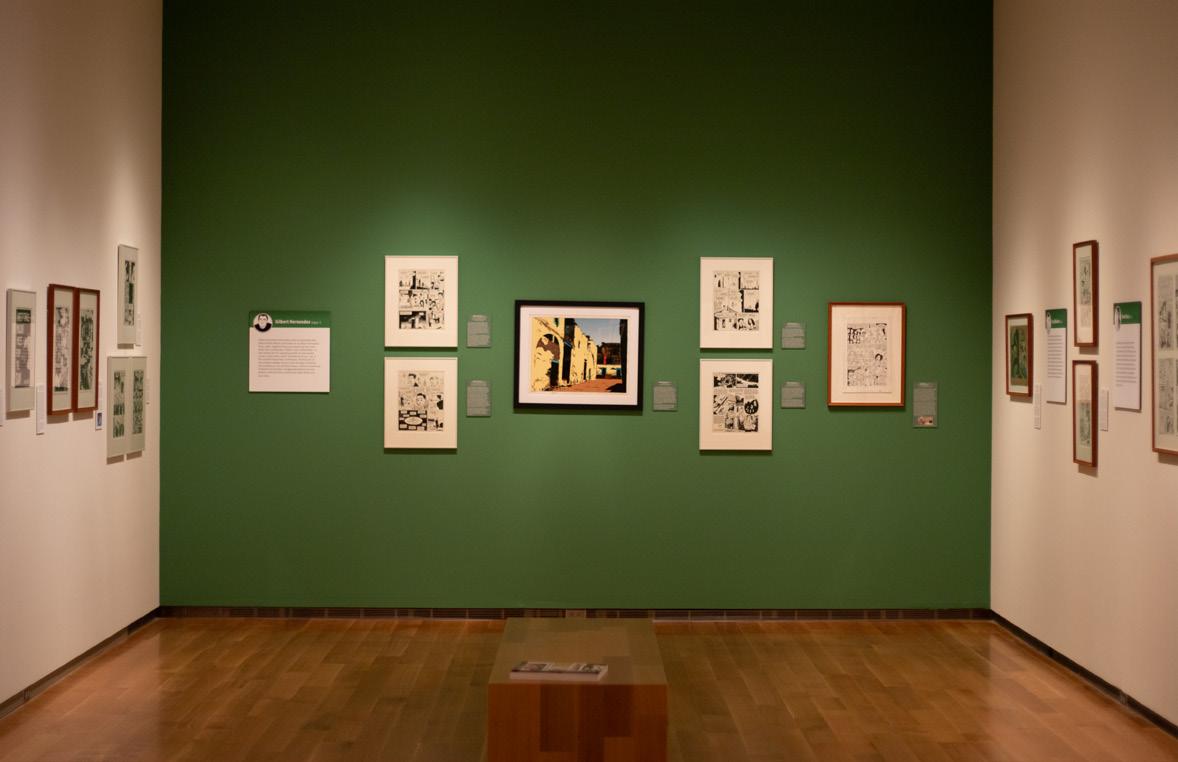
Pieces from Raw magazine, founded by Art Spiegelman and Françoise Mouly, hang in the rst room of the exhibit. A striking acrylic piece by art-
ist Mark Beyer, who also worked as a comic artist, catches the eye with its vibrant orange and turquoise palette.
Artist Krystine Kryttre translated the dark humor and style of cartoons into sculpture of a wacky creature made with taxidermy elements, which appears in the second room of the exhibit.
Both Beyer’s and Kryttre’s pieces explore the array of mediums that comic artists worked with, a theme consistent throughout the exhibit.
When Molotiu rst saw the completed exhibit, which McCoy started working on in 2015, he said the experience was “mind-blowing.”
“Even the very notion of being able to behold in front of you a piece of the original art on which they had drawn literally in pen and paper, which was photographed and printed—that seems so unreachable,” Molotiu said. “And all of a sudden we were able to gather all this work.”
McCoy said that Weirdo took a divergent approach to compiling the art for its publication. Created by Robert Crumb in 1981, the publication high-
lighted the individual visions of artists and explored the mundanity of life and how it feels to be an outsider.
“A lot of the works that we may consider to be the best works that came to be comics have come out of this alternative, creator-owned model,” McCoy said.
e framed works ask visitors to
step close to read the dialogue and captions on each piece of art. McCoy said he recommends that visitors see which drawings and colors catch their eye before walking closer to appreciate the narrative of the comics.
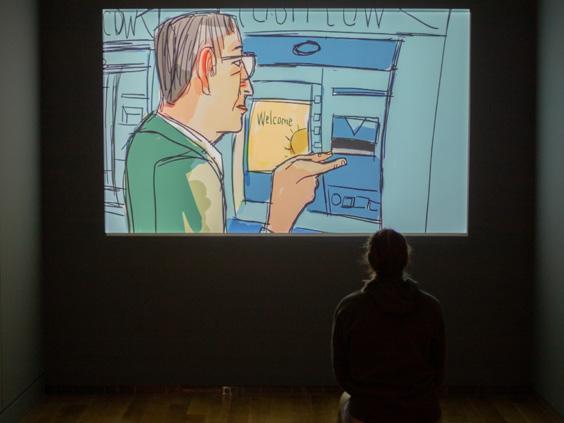
“You just need to be willing to look closely, because you will need to look closely,” McCoy said.

 BY PATERSON TRAN Asst. Arts Editor
BY PATERSON TRAN Asst. Arts Editor
Boston College students walking to classes can see through the modern glass walls of 245 Beacon to the array of wooden work surfaces, sleek machinery, and drawers upon drawers of tools of the Hatchery: BC’s new makerspace.
e Hatchery kicked o the semester with a week full of training sessions starting on Aug. 29.
After students complete an online orientation and safety module, they can
schedule trainings on speci c machines or reserve time slots when they can work independently with a machine.
“It’s an outlet for students to turn their ideas into reality in a way that BC previously hasn’t really o ered to this level,” said Madison Dunaway, the manager of design and innovation at BC and director of the Hatchery.
A team of student employees leads the individualized training sessions on the space’s equipment, including eight sewing machines, a vinyl cutter and a heat press, and a laser cutter.
e space is also home to a digital embroidery machine, 3D printers, and wood-working equipment.
e Hatchery is open from 12 p.m. to 10 p.m. on Sunday through ursday and 12 p.m. to 7 p.m. on Fridays.
Dunaway said that most materials in the makerspaces are free for students to use, and students can use the machines at no cost.
e level that BC has committed is really impressive and really fantastic for the student body,” Dunaway said. “It’s one of the most equitable university makerspaces and maybe the most equitable university makerspace I’ve ever worked at.”
According to Hatchery team member Madison Simmons, MCAS ’25, makerspaces have previously been dominated by white men.
e goal of the Hatchery is to break from preconceptions that only certain people can be interested in creative engineering, Simmons said.
e Hatchery’s mission is to foster accessible learning and inventive think-
ing.
All products that are made in the Hatchery can be taken home by their creators and Simmons this said incentivizes students to be imaginative and explore new skills.
“[Students] will use the vinyl cutter to make stickers and dorm decorations,” Simmons said. “A lot of people also make presents. One project that we’ve had a lot of people working on [is] making charcuterie boards and then sort of laser engraving bows with family members’ names.”
Sarah Treacy, MCAS ’24, began creating her own personal projects at the Hatchery last week and is sewing curtains for her ground-level apartment instead of buying a set online.
Treacy said she’s excited to bring her creative ideas to life in the space.
“It’s very accepting,” Treacy said. “Nobody is going to judge you for whatever you want to create. Everyone’s going to make sure you’re safe and that you know how to do whatever you want.”
e Hatchery plans to collaborate
with other student organizations, and Dunaway said she hopes to connect students to internships at companies that value the experiences students gain in the Hatchery.
“[ ere are] companies that are looking for graduates with experience, and there aren’t a lot of colleges that o er classes and specifically 3D printing,” Dunaway said. “It’s very evident that people need to hire students like the ones that we have.”
BY CHARLEY CONROY Heights StaffBoston College students have arrived for fall semester and brought with them all their anxieties, their excitement, and their homesickness. Despite coming from all over the country and the globe, many BC students
follow a few themes in curating their fall playlists, especially when it comes to dealing with the emotions that come with this new beginning.

In the name of research, I surveyed BC students, asking members of the club Avid Listeners of BC and stopping passersby in front of O’Neill Library about
the songs that they have been listening to so far this semester and why they picked them. Their answers revealed a variety of tastes, feelings, and patterns shared between students.
The result is a Spotify playlist as chaotic as the start of the year itself.
By far the most common reason for listening to songs was for a sense of relaxation that’s subsided since the more carefree days of summer.
The start of the year is a stressful time, between classes and reconnecting with friends, and some students use music to unwind in their free time.
“Evergreen” by Yebba, “The Heart of Worship” by Matt Redman, “Warm” by Dre’es, and “The Commission” by CAIN are a few of the chill songs that many students are leaning on.
If you had professors that breezed over the syllabus on the first day and each due date will come with an element of surprise,
these songs may help you keep your cool.
Some other students’ songs satisfy their nostalgia or ease their homesickness. Some students live 10 minutes from school, but others are across the country or even the world. They miss family, friends from high school, or even just a bed that’s more comfy than the school-issued twin XL in their dorm.
ose feelings are tough to shake, and sometimes letting the nostalgia or sadness wash over is the best way to feel better. Some of the songs that remind students of home are “I Am California” by John Craigie, “Burn, Burn, Burn” by Zach Bryan, “West Coast” by DVBBS and Quinn XCII, and “Start Right Here” by Casting Crowns.
These songs won’t magically send you home, but maybe they’ll help you come to terms with all the changes in your life. The start of the year isn’t all stress and sadness though. There’s excitement for new possibilities and happiness
that comes with the new semester, including the spirit of game days. The songs that capture the feeling of football victory for students are “Yes Sir” by Chief Keef, “Off the Grid” by Kanye West, “Verona” by Muse, and “Little Wing” by Jimi Hendrix.
We could all use a few more happy songs, and a few songs I’ve been listening to recently are “ e Drunk” by Kiltro, “Dance Now” by JID and Kenny Mason, and “Watermelon” by Leo Kottke. ese songs really capture a lot of my excitement going into my senior year.
Students are pulling from the depths of music history to more modern hits to curate their playlists. Everything from The Beatles and David Bowie to Maggie Rogers and Kanye West bring together these snapshots of hopes and musical moods of the semester.
Students are going through a multitude of emotions at the start of the semester, and music is one of the best ways they cope with the bad and celebrate the good.

it speaks to a certain liberal ethos of the campus where if you have opposing views, then you’re liable to have significant pushback, and that pushback only goes one way.”
I found it a curious sign of our times that when I emailed the former president of the Boston College Republicans, a student group on campus, to invite an interview to speak on free speech and other issues, their president, Thomas Sarrouf, expressed hesitancy.
It was not an unexpected response. I suppose I may be the sort of person to whom they would be wary of speaking with. Personally, my political identity aligns more closely with an anarchist capybara than with anything Mitch McConnell has to say. I am also an opinions writer for The Heights , whose editorial board identified a speaker invited by the BC Republicans, Hadley Arkes, as prejudiced, pointing to his views toward LGBTQ+ marriage.
His response was also at least somewhat curious to me. I, as a first-year student at the time and a first-semester columnist for The Heights , was not a BC student when Arkes came to speak. I have no gripes with the BC Republicans, and I would assume they have no gripes with me as an individual.
But their hesitation, I recognize, is not unfounded. As Sarrouf assured me, to speak in Republican tongue has a less than positive connotation on American college campuses.
“I think our campus is very liberal and intolerant of conservative views,” he told me when we sat down for the interview. “I think
I do not share many political views in common with Sarrouf, but I certainly have noticed, as well as he, a certain dogma of accepted expression at BC. We do not protest spectacularly like Berkeley or Harvard. Everyone loves to argue with students at the anti-abortion table, but this is as far as we go in my experience. Civil discourse, a most essential pillar of American democracy, seems malapropos at Boston College.
Speaking, after all, is a tricky and fickle activity. Meaning is lost in translation; audiences often do not hear what you mean to say. Consider this metaphor of rubber duckies in a stream.
Your words spoken now land, “plop!” in a gentle stream like the beautiful little rubber ducklings you intend them to be. They float along, slowly at first, tightly organized into beautiful little sentences, well on their way to be seen by the world.
Before long, all your little ducklings have shuffled this way and that and are swept away in the current. Your audience looks on in perplexity. You wince to see all your ducklings causing confusion to your perceivers downstream.
One of them, your critic, reddens. He reaches angrily into his duckling bag and unleashes a torrent of angry speech onto your flock. Others look on in horror. Before long, assaults are executed left and right onto your simple message, displayed clearly in a line of duckies: you like campus newspapers that have a political leaning. It makes for better reading, after all, which is why you write for “The American Gavel Free
Press.”
“Just who do you think you are?” says your critic’s ducklings. They reveal what you’re really insinuating: you hate the most prized institution in our United States of America: apolitical, truthful reporting.
More critics add to the stream. Now, another writer declares your opinion is simply problematic—journalistic neutrality is the crux of American democracy. Fascist! What’s more—your opponents say your thinking is a symptom of perverse privilege and dominator culture, so yes, please do refrain from dumping your duckies into this stream in the future. (UR DONE).
A stream of twisted and incoherent ducks, all jumbled and noisy, does not invite easy comprehension. You could be forgiven for losing the urge to speak at all, so clogged and dysfunctional our stream of public discourse has become.
Our stream has become inundated with words. Words convey meaning, thus an abundance of words would indicate an abundance of meaning. Words are fickle little creatures, though, and they too elude understanding. Words that confound. Words that oppose each other. Words organized into sweet little maxims about the counterintuitive nature of words. Words, so many words, that the word “words” collapses from a signifier of meaning—“words”—to a sound made with the mouth—“/w ə rds/.”
We drown in words. It is easy to squint one’s eyes and perceive, organized on an O’Neill bookshelf, only white noise—a jumble of incomprehensible language.
There are, in O’Neill Library alone, 2,336,000 books: novels, treatises, manifestos, discourses, journals, criticisms, several copies of the Kama Sutra, story collections,

and every other fashion of words collated into a bound form. For every classic novel, there are twenty diametrically opposed interpretations, also bound into collections of pages. There is a stack full of books that review the books on the stack next to it.
Even if you are inclined to revere the words already composed, it is also easy to feel imposed upon. So many words, so skillfully put together, that one considers the futility of any attempt to add to our stream.
After all, why is what you have to say unique or worthy of addition? Hasn’t it been written already, and perhaps much better than you or I would write it? And won’t so many consider our speech so plainly wrong that it wouldn’t be worth consideration?
I contend that we speakers speak because we feel we must. We have stories in us. We want to tell them. We are humans who must express themselves in some way verbally (or perhaps silently in aggressive interpretive dance). Behind every line of writing, every expressive shout, every rebuff—in essence, all the ducks poured into our gentle stream were placed there by humans. Often, I think we forget the basic assumption of speech: a complex, contradictory, beastly, beautiful human, with human desires and experiences, spoke those words because they were moved by complex, human forces. This, I believe, is the root of our clusterduck.
Read the rest of this story at www.bcheights.com
Aries (Ram): March 21–April 19
Aries signs, the first sign per the Zodiac philosophy (“philosophy”), are traditionally courageous and unpredictable. As much as you might boast, mustering up the courage to call for a food pickup from the guy at Crazy Dough’s doesn’t require as much confidence as you might think. If God gives his toughest battles to his strongest soldiers, you’ve been put in the reserves for the day.
Taurus (Bull): April 19–May 20
Taurus signs are supposed to be diligent and capable, but tend to let work consume them. Even if I don’t think your personality aligns with your birthdate, there are plenty of BC over-achievers who’d identify with this. The world doesn’t need you to
complain about how “awful” you did on the Organic Chemistry exam today—we all know you got a 93. (The shock! The horror!)
Gemini (Twins): May 21–June 21
While I mercilessly reject any Zodiac legitimacy, the one anecdotal truth I’ve seen come from it is that everyone I know who has unpromptedly (key word: unpromptedly) declared themselves a Gemini has something in common—they are all insufferable to be around. My advice? Don’t immediately announce your sign in your first conversation with someone—especially near Fulton Hall.
Cancer (Crab): June 22–July 22
Emotional and devoted, cancers (yours truly) are supposedly great at reading people. Unfortunately for my fellow social science majors, you should still probably quit psychoanalyzing your professor 15 feet after exiting the classroom. If you speak your poorly veiled criticisms loud enough, his God Complex might give you an F Grade Complex.
Leo (Lion): July 23–Aug. 22
Per the Zodiac, Leos are big-hearted and opinionated. Suspending my disbelief for yet another moment, I’d bet you love to pick
pointless political fights on social media. I hate to break it to you, but that 13-year-old with the username “FartSmella69” doesn’t actually pose enough of a threat to democracy to justify your Twitter battles. Do your econ homework instead.
Virgo (Virgin): Aug. 23–Sept. 22
Virgos are humble! Or so Google says. Part of being humble, some of you might want to know, does not include publicly posting on LinkedIn how “humbled and honored” you are to announce your “prestigious” fellowship with the Department of Daddy’s Money.
Libra (Balance): Sept. 23–Oct. 22
Libras (Librans?) seek balance and spirituality, apparently. Unfortunately for you, balancing several shot glasses on your arms as a party trick does not qualify as reflecting this trait.
Scorpius (Scorpion): Oct. 23–Nov. 21
Scorpios are supposed to be ruthless and driven. I ask you to try to divert that energy (if you actually have it) toward something like a school project and not bad-mouthing roommates in a passive-aggressive housing situation that you overdramatize to your other friends twice a week.
Sagittarius (Archer): Nov. 22–Dec. 21
Another risk-taker! Is that why you did Early Decision to be here? What a rush.
Capricornus (Goat): Dec. 22–Jan. 19
Ambitious and enterprising, I’d still estimate via my master’s in Astrology degree that the Capricorn sign struggles to take a shower without passing out. Keep a friend outside the bathroom in case they hear a loud thump.
Aquarius (Water Bearer): Jan. 20–Feb. 18
Mysterious, self-made rebels, huh? Last I checked, self-made rebels don’t have to Venmo request their mom in Private Viewing mode for every “business trip” they take to Sunset Cantina. At least be honest about it!
Pisces (Fish): Feb. 19–March 20
Sensitivity and graciousness doesn’t mean awkwardly letting people go ahead of you in line at the Rat. It’s called “The Rat” — it’s a cold, dingy place with no rules — so either shove your way through, or crawl back to the orderly little lines of Tully Cafe like a wuss.
Tommy Roche is the Opinions Editor of The Heights. He can be reached at tommy.roche@bcheights.com.

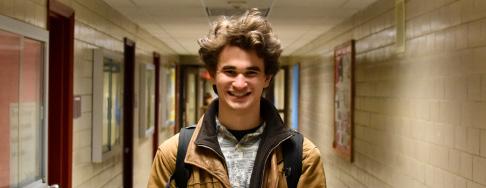

The price of Boston College Dining’s meals relative to the multitude of nutritional needs of over 9,400 undergraduates force many students to ration their meal plan money and can make it difficult for them to meet their basic health needs.

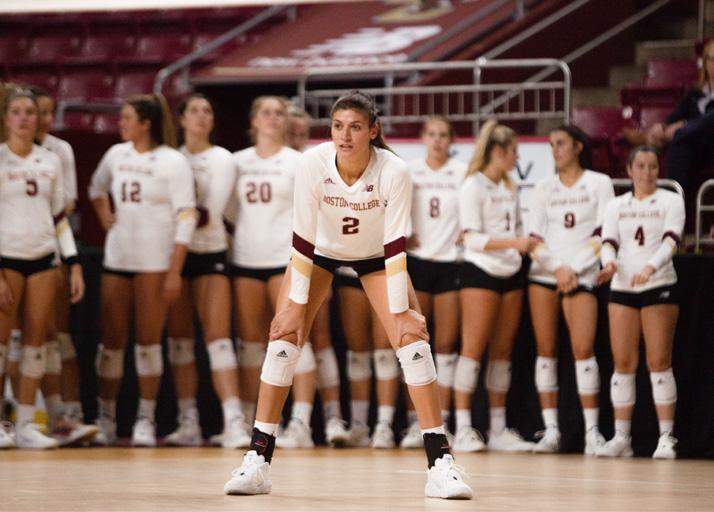


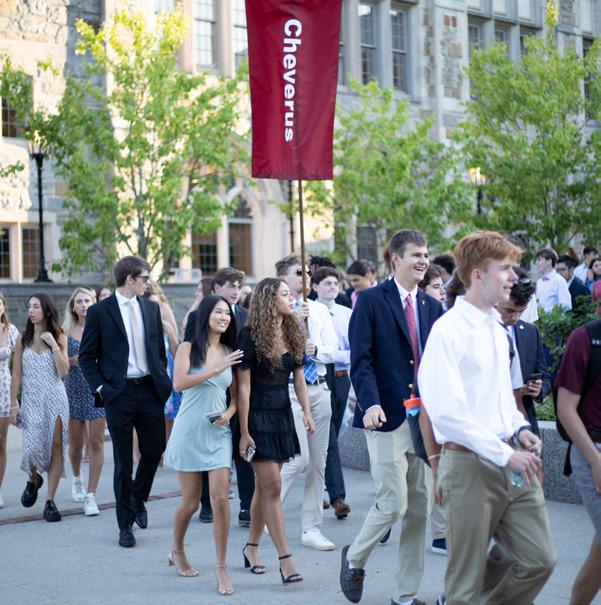
BC Dining—the University’s primary food provider—is an organization that follows BC’s “Ever to Excel” motto and strives to “improve by innovating and making changes based on suggestions from students and faculty.” BC Dining’s problematic pricing structure contradicts the Jesuit values of health and self-care that BC holds dear. The ideal of cura personalis—or “care for the whole person”—not only includes spiritual satiation, but physical satiation as well.
Unlike other universities, which use a swipe and buffet style of dining to ensure students can eat as much as they want per meal, BC students must pay for individual items in dining halls via meal plans connected to their student accounts.
After the outbreak of COVID-19, nationwide worker and supply chain shortages caused by the pandemic forced BC Dining to make drastic changes to its operations, from reducing its hours of availability to removing entire menu items.
The one thing that has remained constant, though, has been BC Dining’s high food prices. These prices make it nearly impossible for students to eat three meals per day.
According to the BC Division of Auxiliary Services’ website, the mandatory residential dining plan for students provides $6,000 of “dining bucks” per year, or approximately $26 per day for each undergraduate on the plan. Despite this seemingly high daily allocation, these $26 can generally only allow for two meals per day, often with
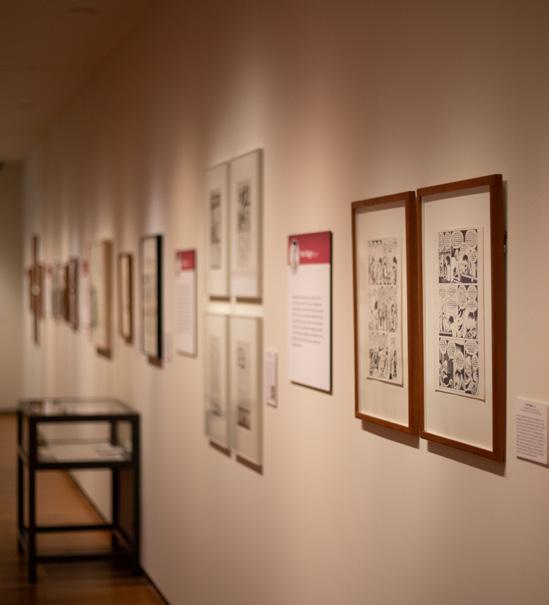
portion sizes that are determined by BC Dining staff, not students. These two meals do not even include drinks, snacks, or most add-ons.
This system frequently forces students to ration their meal plan money or else risk running out of all of their dining dollars before the end of the semester. Those who exhaust their semester plan must fully depend on other undergraduates’ meal cards or pay for upgraded “Flex” plans, which cost an additional $300, $800, or $1,200.
The BC Dining website does not specify if $26 per day includes meals on weekends or days off from classes, not to mention differences in students’ dietary preferences or allergies that would require them to have different spending habits than their peers.
If a student wishes to add a Flex Dining Plan, they must add funds directly out of a credit card, eCheck, or add charges to their student account. A Maroon or Gold Upgrade to the dining plan costs $800 or $1200, respectively.

Even if a student eats only three modest meals per day, they are likely to run out of money weeks before the end of the semester and will be forced to rely on other students’ cards until the semester break. This is an unneeded burden for students with normal dieting needs, especially during a critical time in the semester—preparation for final exams.
Admittedly, BC Dining is not the only university dining service struggling to provide adequate food at decent prices for undergraduate students.
While BC Dining itself has reported in an email to The Heights that it has seen a year-over-year increase of 26.3 percent in the cost of ingredients, the organization operates on a surprisingly low budget com -
pared to other universities. According to an email from BC Dining, the annual cost for one residential meal plan at BC ($6,000) is lower than that of Cornell ($6,612), Dartmouth ($7,218), UMass Amherst ($7,392), Georgetown ($7,280), Holy Cross ($7,520), Tufts ($7,636), Villanova ($8,100), and Duke ($8,045).
Regardless of the cost efficiency of BC Dining, online BC resources continue to mislead students by asserting that the default residential dining plan can satisfy the needs of the BC student population. It is disingenuous for BC to advertise that the minimum dining plan will “meet most students’ dining needs,” when many first- and second-year students are struggling to make their meals plans last the entire semester.
At the surface level, there appear to be a variety of possible cost-effective solutions to BC Dining’s pricing issues, but it remains unseen if any are feasible. These possible solutions include the creation of a “swipe” buffet system like other comparable universities or creating an outlet for students to “sell” their dining bucks in a way similar to the system of Washington University at St. Louis. Lacking knowledge of BC Dining’s internal financial operations, however, The Heights Editorial Board cannot guarantee that any of these solutions would make fiscal sense or eradicate any of the pricing issues.
Despite the possible lack of viable solutions, the BC Dining status quo fails to uphold the Jesuit values of the University. In order to promote these ideals and care for their students more effectively, BC administrators should generate solutions to pricing issues in dining halls to prevent unhealthy food rationing and insecurity for undergraduates at the end of every semester.

With the Hokies in prime scoring position after Jurkovec tossed the interception, Virginia Tech transitioned to the run game with Connor Blumrick and Grant Wells for a gain of four yards in two plays, setting up fourth-and-1.
But with the chance to make a stop, Jaiden Woodbey committed a costly error, planting his hands into the neutral zone. O cials called him o sides, handing the Hokies a rst-and-goal.
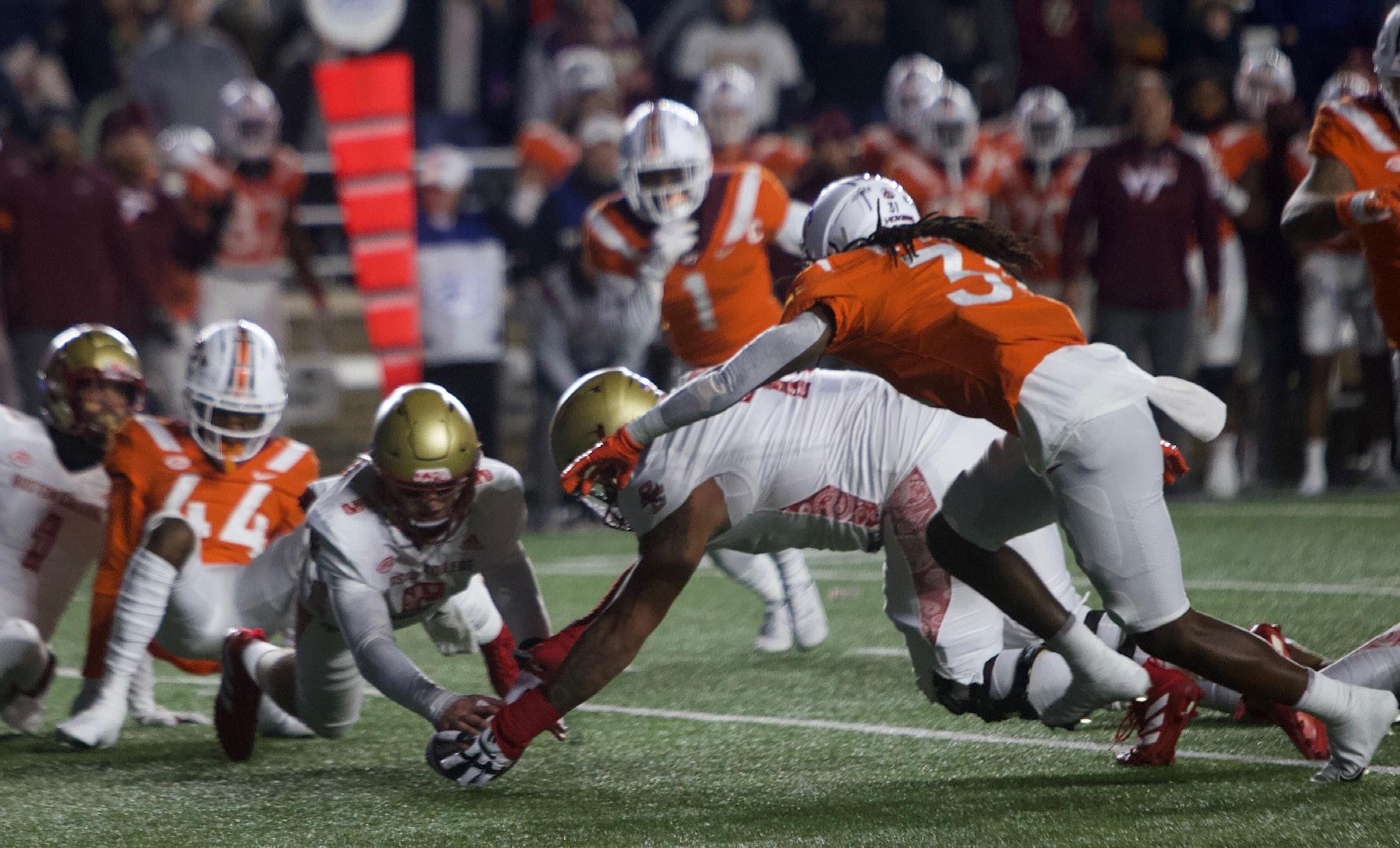
Then came a domino effect. Between Jurkovec’s interception and Woodbey’s penalty, the Eagles fell into a downward spiral. On fourth-and-goal from the 1-yard line, running back Jalen Holston plunged into the end zone behind a heap of linemen, giving the Hokies their rst score of the day and putting Virginia Tech up 7–0.
After a 3-and-out on the next o ensive drive for the Eagles, Bryce Steele brought the o ense back out onto the eld after recording a sack.
“We saw everything that we’ve seen in lm,” linebacker Kam Arnold said. “We prepare this week for everything that we see on lm in the previous game and I thought we were well prepared. I think Bryce [Steele] took a big step today, and we played at a level that we need him to play at. We’ve got good linebackers, and we feel that we all can make a big impact and contribute.”
The Hokies worked the air through receiver Stephen Gosnell, and Wells nished the game 16of-25 for 140 yards and a passing touchdown. Virginia Tech running backs Keshawn King and Jalen Holston were just as dominant, working in tandem for 117 yards and a rushing touchdown.
Despite the loss, Hafley remained optimistic of the Eagles’ chances of recovering this season, after two tough losses.
“ ese guys will ght,” Ha ey said. “They’re going through a tough time right now. I don’t think this group’s gonna lay it down. We have a lot of football left to play.”
BY JACK BERGAMINI Asst. Sports EditorBoston College quarterback Phil Jurkovec certainly has a history with Virginia Tech. Jurkovec made a triumphant return from injury last season against the Hokies in BC’s annual Red Bandanna Game, leading the Eagles to a victory in a packed Alumni Stadium that gave the team—and its fanbase—hope for the rest of the season.

But Saturday night’s 27–10 loss against the Hokies in Blacksburg, Va. had almost the exact opposite effect. Jurkovec played one of his most disappointing games as an Eagle—a game that featured a soldout, 65,000-person crowd in Lane Stadium on ACC Network’s primetime night slot.
Here are three observations from the loss.
After recording a team-high 15 targets in BC’s Week One loss to
Rutgers, wide receiver Zay Flowers had a mere ve targets in Saturday’s game. A notable missed opportunity came in the second quarter when Jurkovec failed to see a wide open Flowers darting for the end zone. Even when Jurkovec did nd Flowers, his throws were often far from perfect, including an underthrow in the third quarter that forced Flowers to slow down to make the catch after smoking his defender at the line of scrimmage.
Jurkovec committed a similar mistake when he overthrew Jaden Williams on a deep route, eventually resulting in a three-and-out. BC nished the game with nine three-andouts, largely from a lack of cohesion from the o ense as a whole.
A head-scratching interception against Jurkovec on the second play of the game set the tone for the night, as the Hokies only had to march 14 yards to take the lead. Tight end George Takacs, who had four targets Saturday compared to his 12 last week, faced the same fate as Flowers. Head coach Je Ha ey’s plea to get
receivers Jaelen Gill and Williams more involved didn’t go as planned, as the duo combined for only one more catch Saturday on just two more targets than the previous week. e entire passing o ense looked out of sync and unprepared on Saturday, bringing into question how e ective new o ensive coordinator
John McNulty’s game plan is. e Eagles only had ve plays in the double digits, and the longest was a 49-yard pass catch from Flowers.
Increased playing time for running back Alec Sinkfield was not enough to help the Eagles’ ground game get back to success after a tough showing against Rutgers. e rushing attack instead took a step back, totaling four net yards. The longest play on the ground was a 14-yard run from Jurkovec. Pat Garwo III rushed 10 times for 15 yards, and Sink eld netted four
In three years at Notre Dame, tight end George Takacs registered eight receptions for 78 total receiving yards. In just one game at Boston College, he caught seven passes for 84 yards.
Takacs has already proved that he’s just what BC’s roster needed this season: a sturdy deep threat who can utilize his physical gifts to
make down eld gains.
Takacs is not just a means to take pressure o the o ensive line, as he was at Notre Dame. He has a chance to create a new identity in a new system unlike the one that existed for him in South Bend. His higher ceiling is a result of his four years of experience as the secondary guy in tandem with his physical frame as a receiving weapon.
When the Eagles lost tight end Trae Barry and four o ensive line-
man this o season, head coach Je Ha ey was in a recruitment mopup process. To deliver on a new tight end, Ha ey worked alongside his new o ensive coordinator. BC landed Takacs due in large part to John McNulty, who coached tight ends at Notre Dame before coming to BC this o season.
But McNulty wasn’t the only one who played a part in getting Takacs to the Heights.
“Phil [Jurkovec] was big in get-
ting me here,” Takacs said. “He was a guy that I stayed in touch with when he went to Boston College, and just having someone here that I can trust in a prominent position was huge in getting me to where I am.”
Now Takacs has the opportunity to play with Jurkovec, who also transferred to BC from South Bend.
e trio’s reunion builds anticipation for BC fans who haven’t seen an eight-win season since 2009 and
a seven-win season since 2018.
“We’ve been out there before,” Takacs said of Jurkovec. “We’ve been playing together on and o for four years now. So yeah, I think when I got out there it de nitely played a factor with that connection, that non-verbal communication type stu that worked out so well.”
Takacs was a four-star recruit
Notebook, from A10
yards. e Eagles averaged 0.2 yards per rush Saturday while losing 57 yards on the ground, 37 of which came from sacks.
Much of the ine ectiveness of the run game can be traced back to BC’s o ensive line. BC announced before the game that the Eagles would be without starting left tackle Ozzy Trapilo due to injury in a surprise scratch—a major blow to BC’s already thin and inexperienced O-line. Jack Conley replaced Trapilo, but overall, BC’s O-line failed to improve after Week One’s blunder.
BC’s running backs had very little room to run and hardly any gaps to take throughout the game. A stagnant run game puts pressure on the passing o ense, which was already struggling, to step up. Jurkovec couldn’t carry the o ense, as he faced constant pressure and was sacked ve times. e result was 155 total yards of total o ense with an O-line that looked as if it was handing out life jackets on the Titanic, doing everything it could to prevent the team from drowning
with it.
Defense Held Tough, But It’s Not Enough
While it was far from perfect, the Eagles’ defense provided plenty of opportunities for the o ense to get back in the game. BC forced the Hokies to punt seven times, but the o ense only garnered 10 points all night. Missed opportunities were a theme, including when Kam Arnold
and Jaiden Woodbey stopped the Hokies on a fourth-and-1 try. But what followed was a quick threeand-out from the Eagles that saw Jurkovec get sacked once and throw two incompletions.
It wasn’t all good defensively, though. BC only registered two sacks all night, unable to get in Hokies quarterback Grant Wells’ face. One particular mishap came when
BC’s Chibueze Onwuka and Bryce Steele missed a tackle on a thirdand-6 when the pocket collapsed. Wells escaped, running for 12 yards and a rst down, and Virginia Tech went on to hit a 49-yard eld goal. e low point was a 65-yard touchdown run from Hokies running back Keshawn King after he maneuvered around BC’s defense practically untouched.
Takacs, from A10
out of Naples, Fla. and the No. 244 player nationally according to 247Sports. He participated in the 2018 U.S. Army All-American Bowl in San Antonio, Texas as a senior, one year after he committed to play for the Fighting Irish over Georgia and Florida.
But Takacs found himself primarily in a blocking role at Notre Dame. He arrived at BC having played just 122 snaps and made ve catches for 42 yards through his rst three years.
Even with just two games as an Eagle under his belt, he’s already showcasing the skills that have been on reserve for the last four years.
Until he transferred, barriers keeping Takacs from playing any role other than clean-up duty or goal-line man wouldn’t move. So in his rst time as a true receiving tight end—BC’s season-opening loss to Rutgers—it was no surprise to learn that he’ll have to make some physical adjustments before he fully nds his role.
“It’s just something that’s going to come as you play more games,” Takacs said. “I’m trying to get a little extra conditioning in after practice. e heat was kind of a factor, but it’s something I have to be prepared for. I just have to keep working at it, and eventually it’ll
catch up.”
In Takacs’ freshman year at Notre Dame in 2018, the barriers keeping him back from playing a receiving role were Alizé Mack and Cole Kmet. Kmet played in 2019 before the Chicago Bears drafted him, and Mack went to the Green Bay Packers that same year.
Tommy Tremble was ready to assume a role in the o ense before Takacs was. Michael Mayer, a top-40 recruit, arrived in South Bend in 2020. All together, Takacs sat on the bench behind second-round pick Kmet, third-rounder Tremble, seventh-rounder Mack, and potential rst-rounder Mayer.
Even for a former four-star recruit, that’s a challenging lineup to break into. On the Heights, Takacs is nally the clear No. 1 tight end.
“I de nitely think that there’s a lot of things I can do,” Takacs said. “We have some talented receivers outside— Zay [Flowers] and Jaelen [Gill]. Having someone else who can run down the seams really stresses the defense. It’s a huge advantage, especially for the safeties who have to respect the outside.”
While Takacs could have chosen a di erent path—continuing to be a role model for developmental players in the run game—all the way through his collegiate career, the Eagles have already used him in a di erent way. McNulty should continue to do everything in his
power to make that transition seamless after former BC tight end Joey Luchetti medically retired from football.
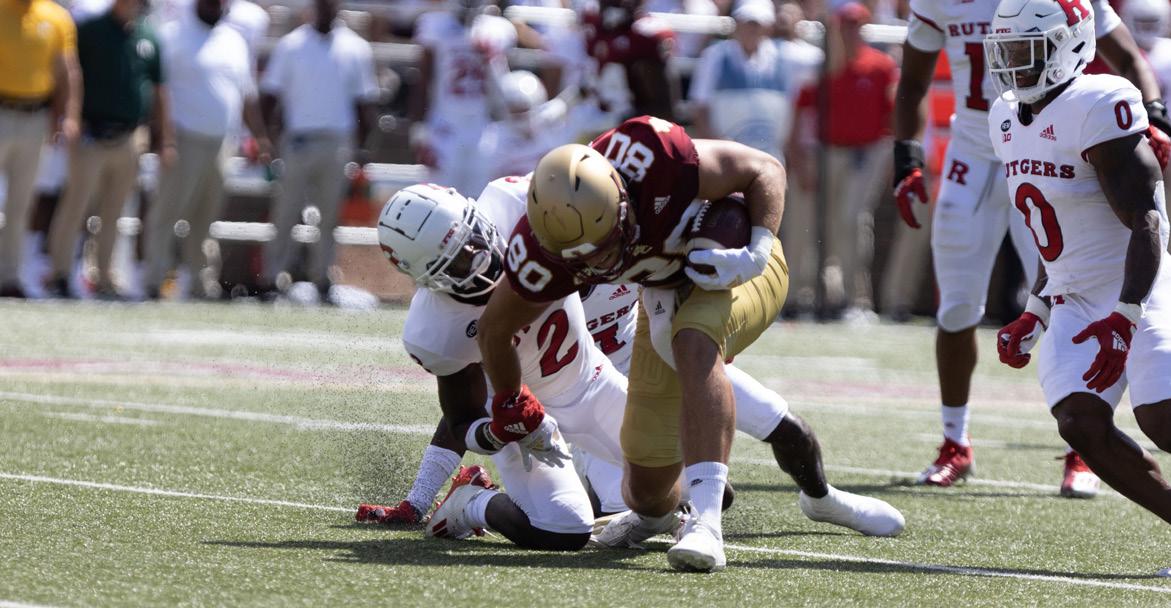
Takacs was primarily a Y tight end for the Fighting Irish—spending most snaps he got as a blocker—but he provides a burst of speed o the line and heavy ammunition down eld in Chestnut Hill.
“ e tight end room got hit hard with the loss of Joey [Luchetti],” Ha ey said the day after the Rutgers loss. “I thought George did a really nice job of stepping up. I think that was a career day for him. All along, I said it: George can run. He’s fast, and he caught the ball really well.”
On 60 percent of his snaps prior to BC, Takacs was a blocker in short-yardage situations and played mostly in a run-dominant, 12-personnel package, according to Pro Football Focus. In 67 snaps last season, he ran a route just 15 times and caught three passes for 36 yards.

Since arriving at BC, Takacs has been a play-action threat and has played in the slot and on the outside for deep shots.
Takacs is now in a position to not only complement the o ense, but to enhance it, just like former BC tight end Hunter Long did in 2020.
“During the game, that was the rst thing I thought about,” Flowers said. “When I was seeing him make plays I was just thinking about Hunter [Long] the whole time. And he wore No. 80 too, so it kind of threw me o a little bit.”
As a redshirt junior, Long led all tight ends nationally in receptions with 57 and ranked second in receiving yards with 685. Takacs looks like the same kind of player.
“ e defense has to pay more attention to everybody else,” Flowers said. “Not just me, to George [Takacs], to Jaelen [Gill], to Jaden [Williams], and I feel like we’re all threats at the end of

the day, so you gotta pay attention to everybody.”
Takacs isn’t a stronghold by himself. He is a cog in the o ensive machine, bolstering it and ne-tuning its operations. He’s a complement to Flowers’ speed, Gill’s hands, and Pat Garwo III’s explosiveness. In some ways, he embodies a tradition that extends way back in BC history: Takacs is a “man for others.”
With as inexperienced an o ensive line as BC has, taking pressure o the back eld is paramount to a successful o ense, and Takacs has that ability as well.
e coaching sta may want to consider pulling Takacs back in order to accumulate plugs up the middle, creating space for Garwo on the outside and in the creases. At the very least, it’s a way to set up battles Garwo can and will win, and Takacs can play in a variety of o ensive systems. With his proven run-blocking ability and developing pass game success, he’s evolved into a model for hybrid tight ends. is is the second straight year BC has landed a tight end from the transfer portal. While Takacs’ collegiate legacy leans toward being a model developmental tight end in the run game, there is still a chance for him to make a real impact, and that impact isn’t just going to be on the ground.
With time, details, and execution, he’ll be a top target. Best of all, iron sharpens iron, and Takacs takes the best of his game to new levels for everybody else surrounding him.
“It’s a role that I’ve kind of stepped into,” Takacs said when asked about emerging into a leadership position. “I’m happy to do it. I like to do it. It’s really just about helping the younger guys stay con dent—taking what helped me and trying to pass it along to the younger guys.”
I’m happy you’re in that role, too, George.
As Boston College women’s soccer stepped onto the field for its Red Bandanna Game against Army on Sunday afternoon, Sydney Moore didn’t don her typical No. 27 jersey.
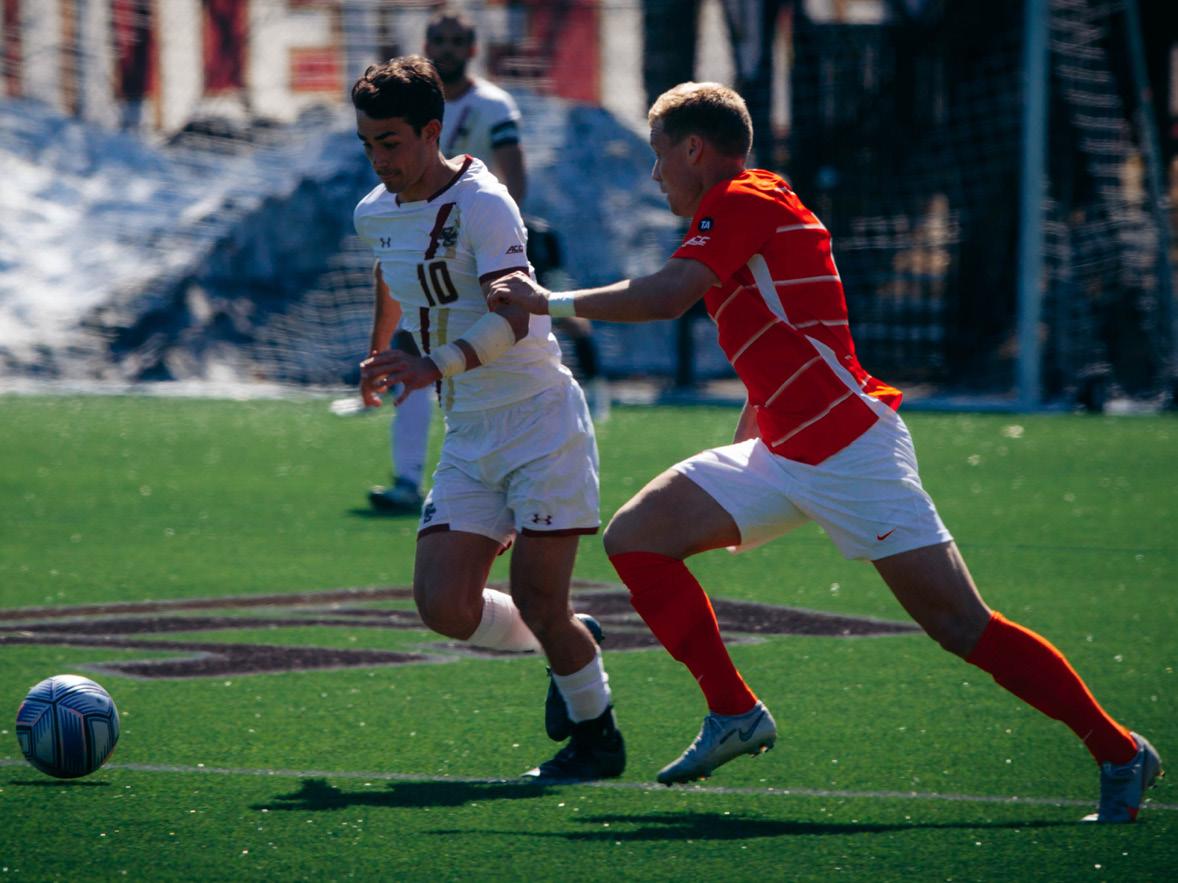
Instead, Moore wore No. 19 in honor of Welles Crowther, BC ’99, who sacrificed his life during the Sept. 11 terrorist attacks. Moore was awarded the honor as a player who exempli ed sel essness and service in the BC community.
Moore and the Eagles (4–1–3) fought to a 2–2 tie against West Point (2–3–3) in the Red Bandanna Game.
e non-conference game was the teams’ third all-time meeting, and BC now leads the series 2–0–1.
e Eagles’ starting lineup looked di erent going into Sunday’s game than it has the rest of this season. Sophomore Eva Nahas made her rst collegiate start at goalie, playing all 90 minutes and nishing with two saves. Bucknell transfer Claire Mensi and freshman Emma Badger also made their rst starts for BC and played the full 90 minutes
“I thought she did a really nice job,” BC head coach Jason Lowe said of Badger. “I thought [we had] some good performances. Especially with some key players out, some people stepped up.”
e Eagles dominated possession in the rst half and had success moving the ball up and down the eld. In the 29th minute, Sophia Lowenberg headed a corner kick by Laura Gou-

vin into the net to give the Eagles a 1–0 lead. It was Lowenberg’s rst career goal.
After Lowenberg’s goal, the Eagles lost some of the energy they brought early on in the half. A defensive breakdown in the 37th minute gave Army an open shot on net, which it capitalized on to even the scoreboard.
The Eagles started the second half holding possession of the ball, but they struggled to keep it for the rest of the half.
Lowe attributed the loss of possession to a lack of patience on the ball, especially when transitioning
from defense to o ense. e Eagles were slow to get the ball out of the box on defense, creating scoring opportunities for Army.
“We have to be more patient,” Lowe said. “I saw us kind of panicking as we crossed half eld, and we have to play more in the nal third to give ourselves better opportunities inside the box.”
Another key issue for the Eagles was winning the ball out of the air.
“We gave them a lot of balls where they were countering with long balls on us, and we didn’t deal with their long balls very well,” Lowe said.
A goal from Ella Richards in the
62nd minute put the Eagles ahead by one with 30 minutes left in the game. The goal re-energized the Eagles for a couple of minutes, but it was not enough to hold o Army. In the 80th minute, BC slowed down and allowed Army to break through its defensive line and score to tie things up at two apiece.
“Overtime is gone now,” Lowe said, referring to a rule change made by the NCAA in April that eliminated the sudden-death overtime period. “With overtime, we had a little bit of momentum at the end, so it could have been a different result.”
With a crowd of 1,028 filling the stands, Boston College men’s soccer faced its toughest opponent yet: defending national champion No. 1 Clemson.

Clemson rattled o two goals before BC’s Stefan Sigurdarson scored in the 70th minute, but the Eagles (2–2–1, 0–1 Atlantic Coast) couldn’t net the equalizer and fell 2–1 to Clemson (5–0, 1–0).
e crowd was amazing—that’s what’s so special about playing at home,” BC head coach Bob ompson said. “We’ve been great at home and that’s for good reason, the crowd was awesome.”
Freshman Augustine Boadi generated BC’s rst real o ensive opportunity early in the rst half, bursting through mid eld before passing to captain Amos Shapiro-Thompson.

e captain whipped the ball across the box, and the play resulted in a corner kick for the Eagles. Shapiro- ompson took the corner, and Victor Souza connected on a header,
but the ball landed just wide. “ at’s probably my biggest note of the game: just how well the freshmen played in their rst ACC game,” ompson said. “It’s a good sign for the future.”
Five minutes later, BC’s Ted Cargill picked up a yellow card, inciting an even greater intensity in the crowd at the Newton Soccer Complex.
Clemson took the lead in the 34th minute on a goal by Tim Ströbeck.
Adrian Zenko and Shapiro- ompson got into a tussle with Clemson players at mid eld, resulting in a yellow card against Zenko. BC
goalkeeper Brennan Klein commanded his defense after the card to preserve the narrow de cit.
Freshman CJ Williams picked up a red card four minutes later, putting BC down a man. Thompson and Shapiro-Thompson both said that they disagreed with the call but were pleased with the way BC responded.
Up a man, Clemson doubled its lead in the 68th minute o a free kick.
Sigurdarson, BC’s leading scorer, netted one for the Eagles just two minutes later to pull back within one goal.
“To be down to 10 men for a red
card that was absolutely not a red, and to respond by scoring a goal, defending well, having more chances than them—I’m just proud of the ght and the togetherness,” Shapiro- ompson said.
BC dominated the last 10 minutes of the game. e Eagles took corner after corner but couldn’t beat Clemson’s defense, falling 2–1 to the Tigers.
“I thought we were really unlucky,” Thompson said. “The guys fought really hard even through a couple of really bad calls, which was unfortunate. But I thought the heart of our team was tremendous.”